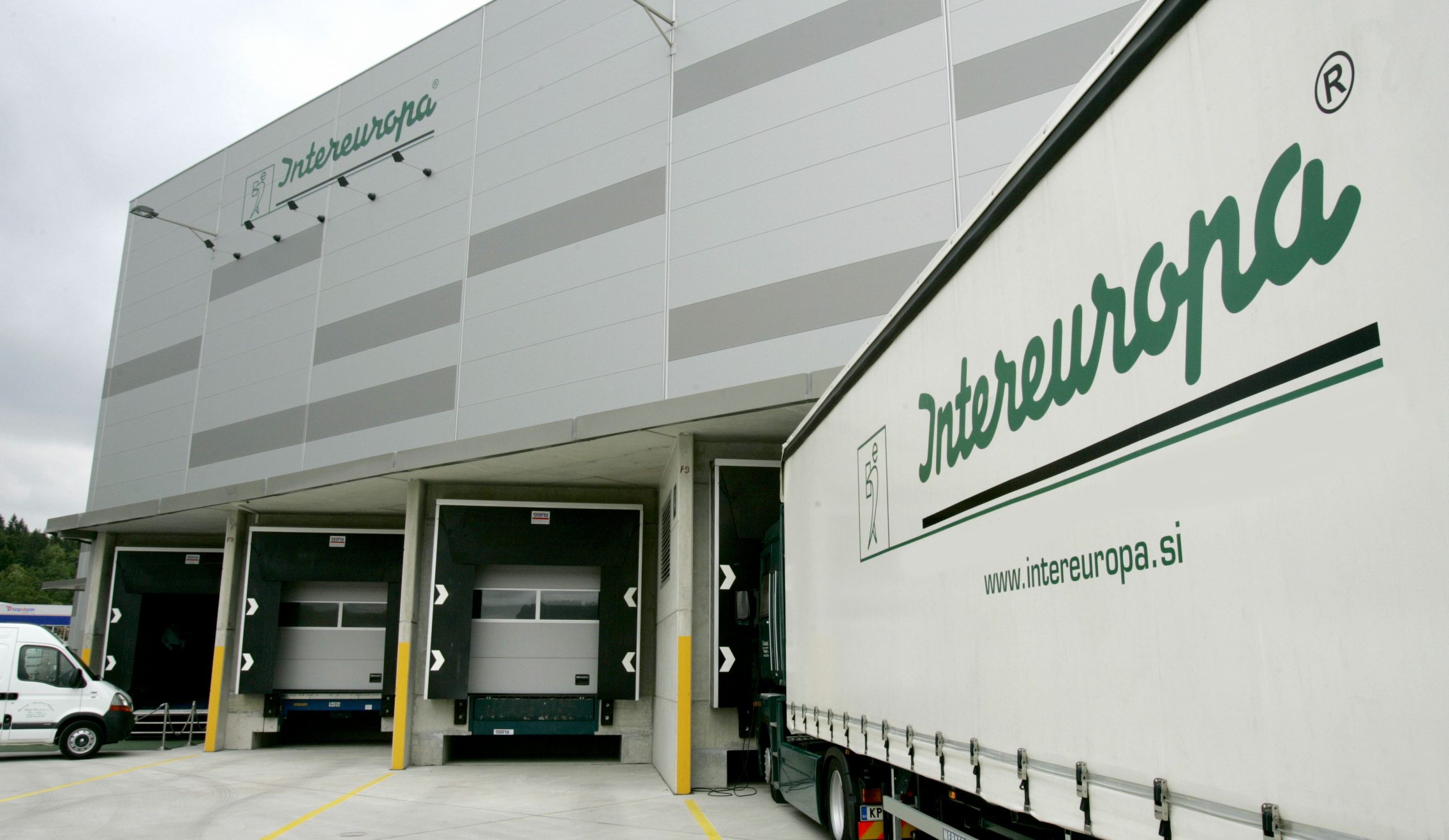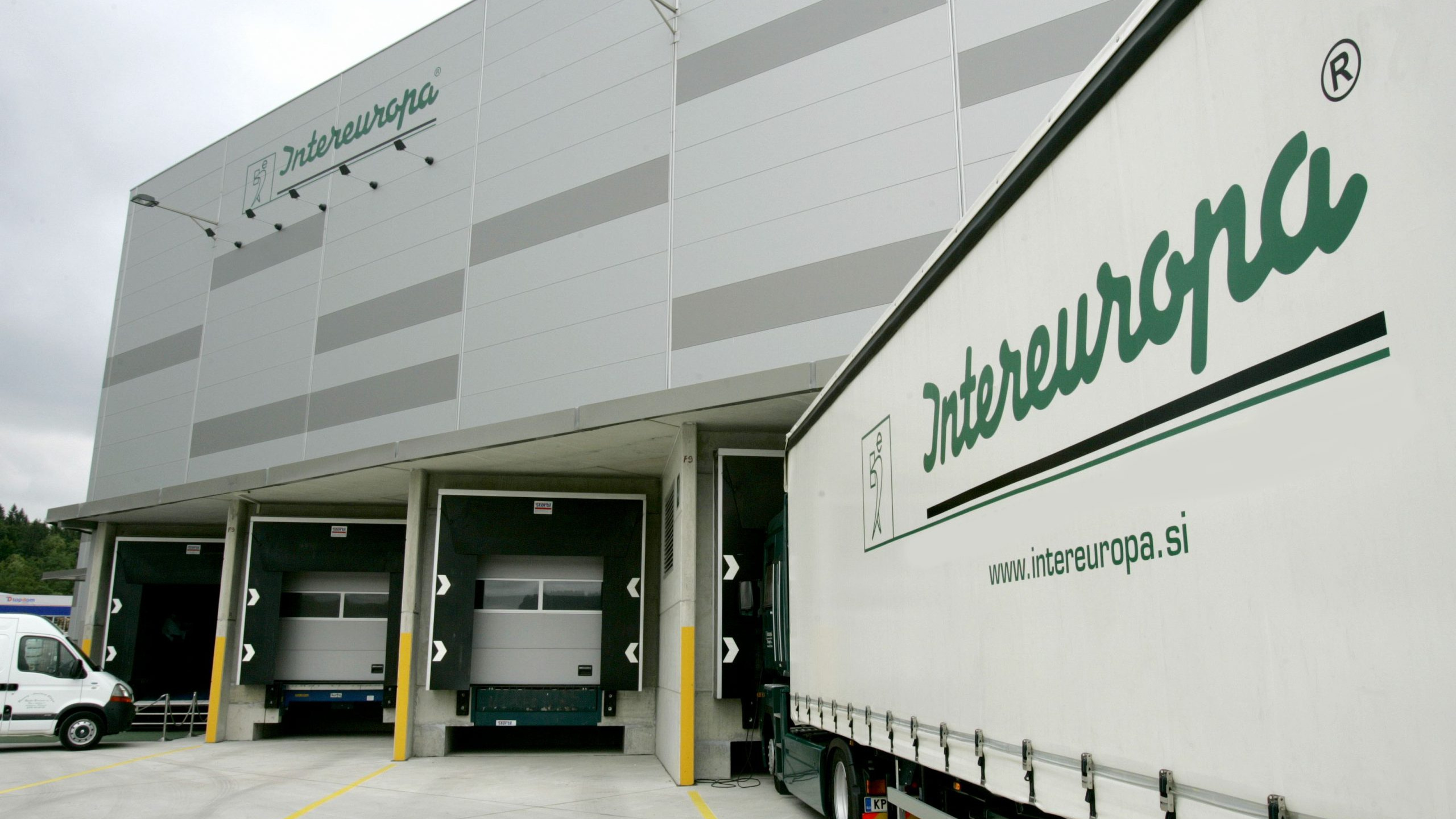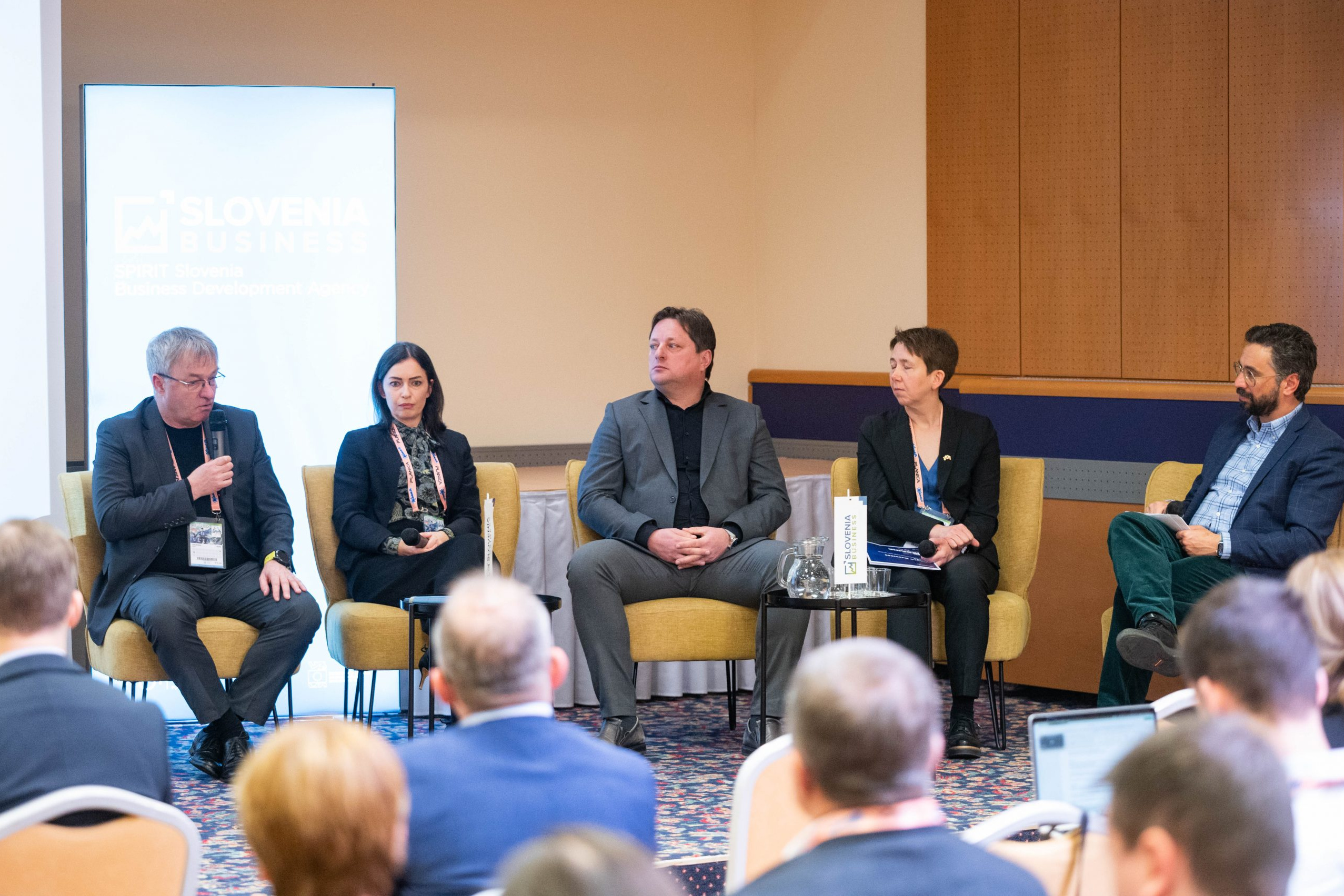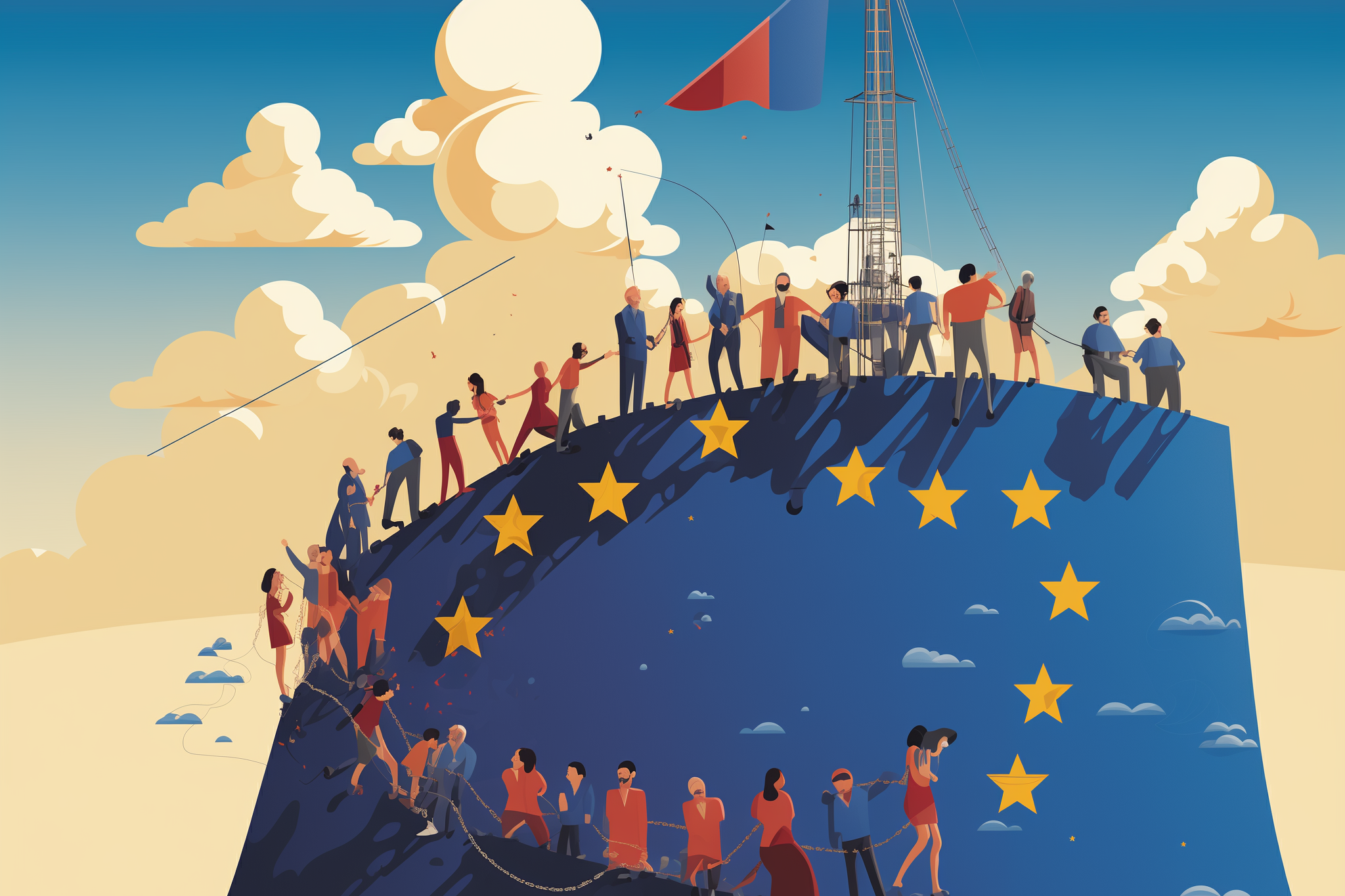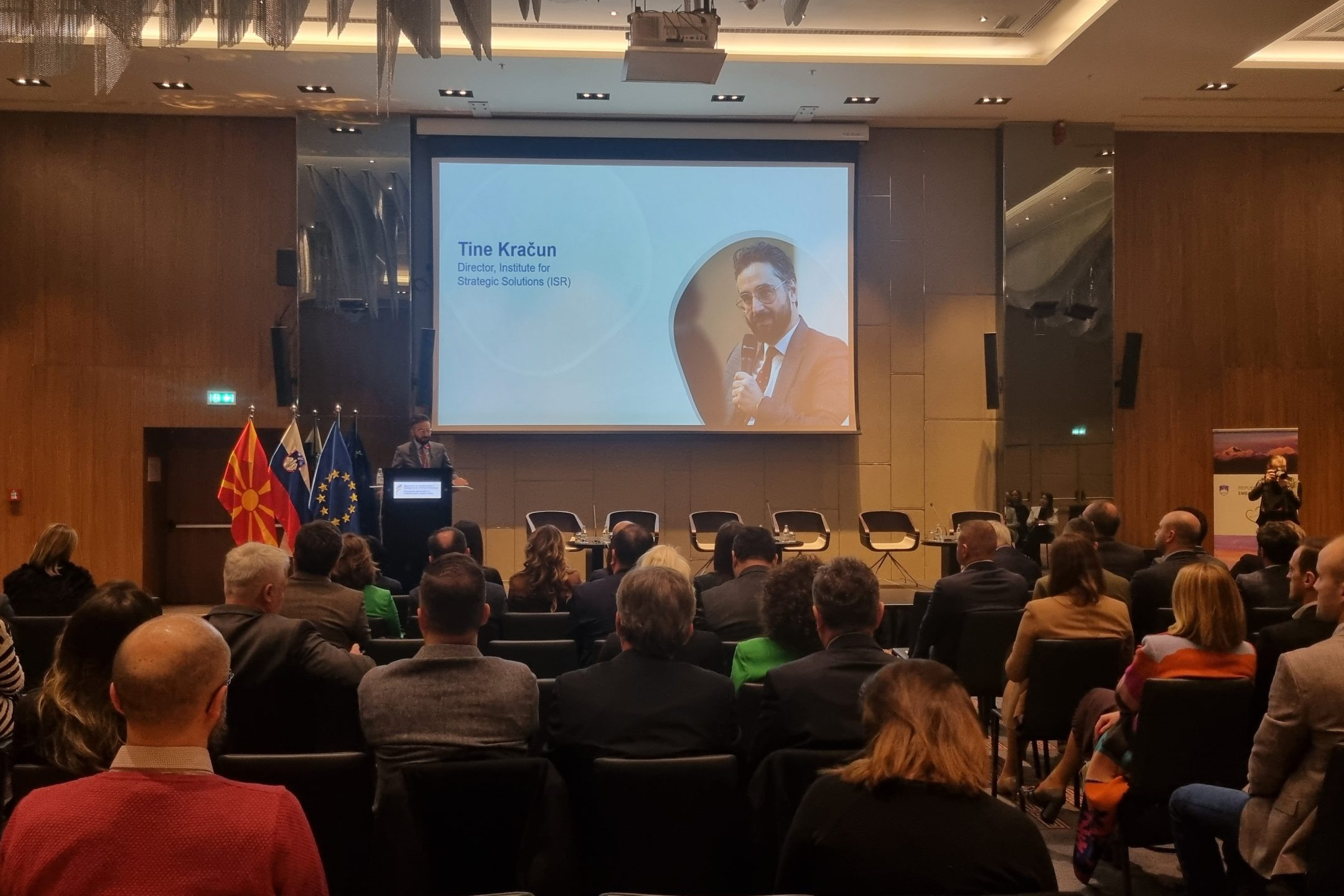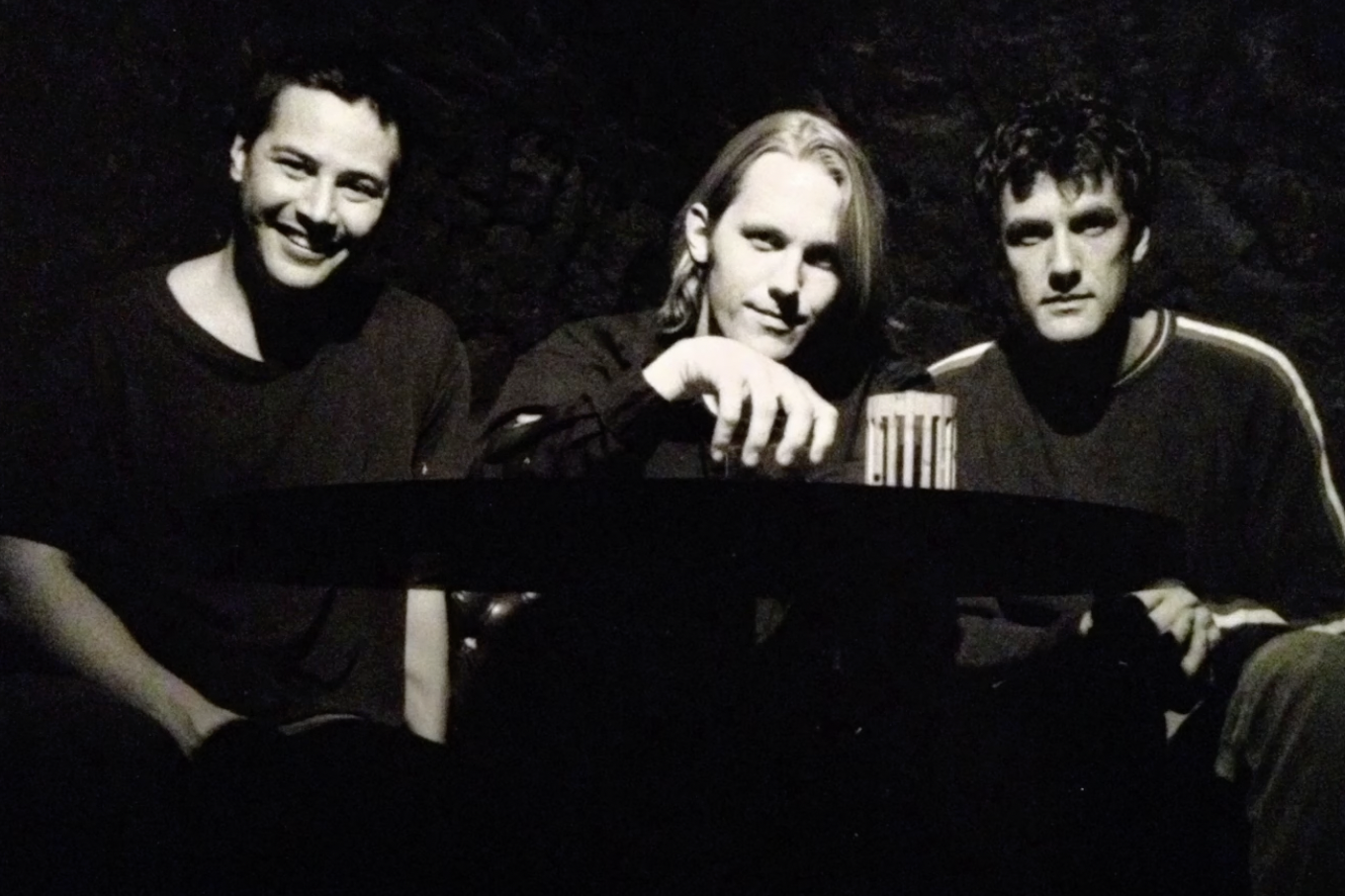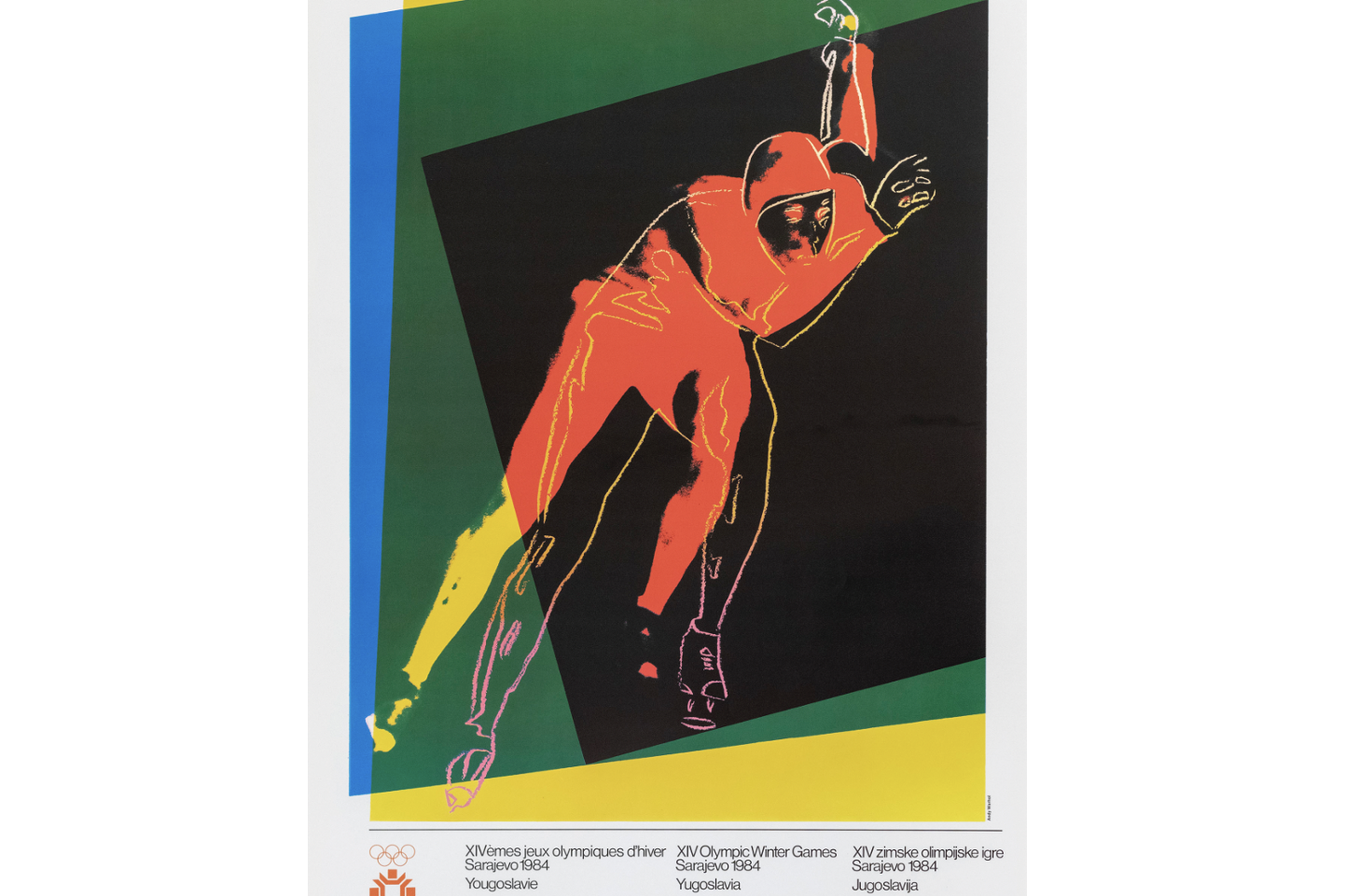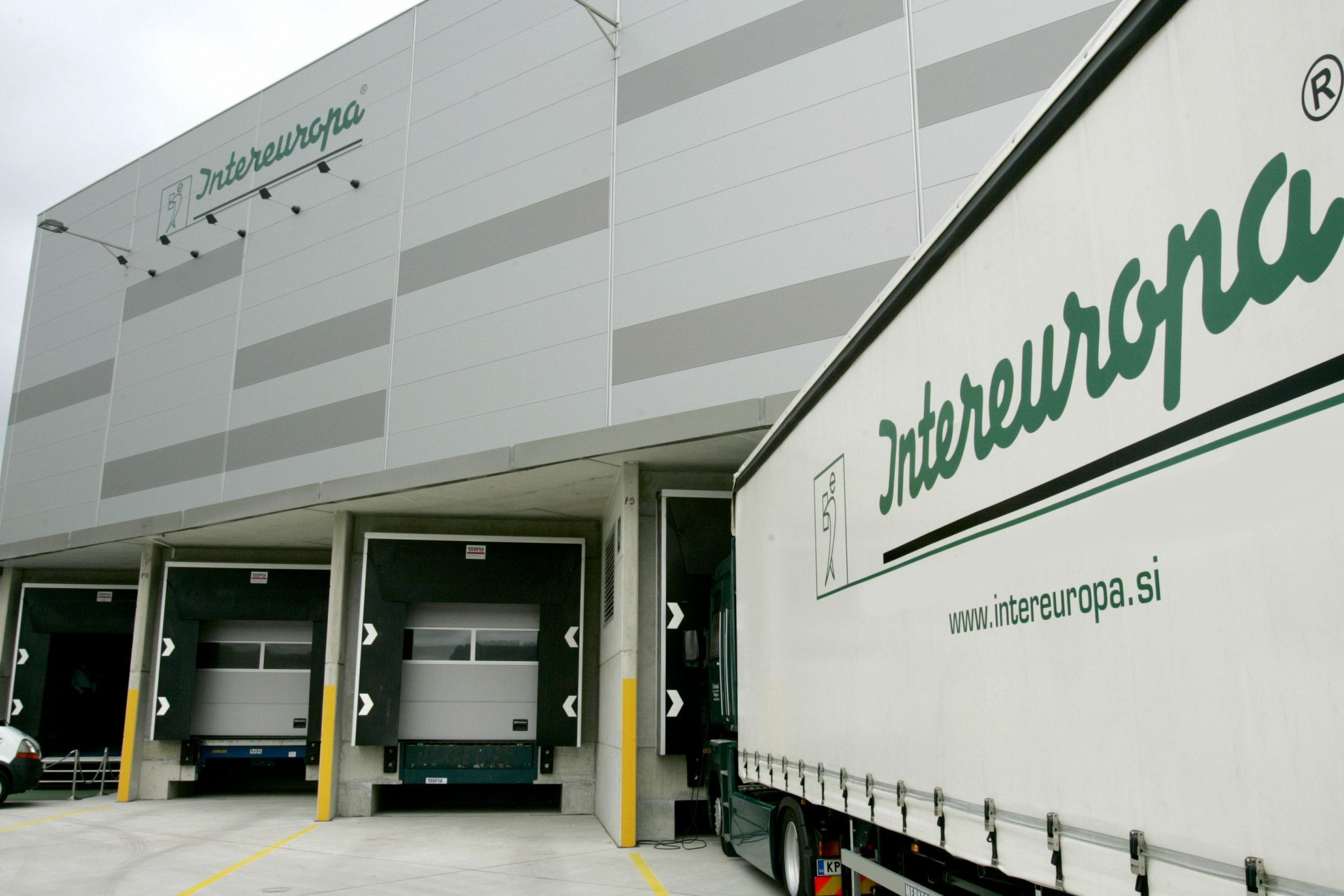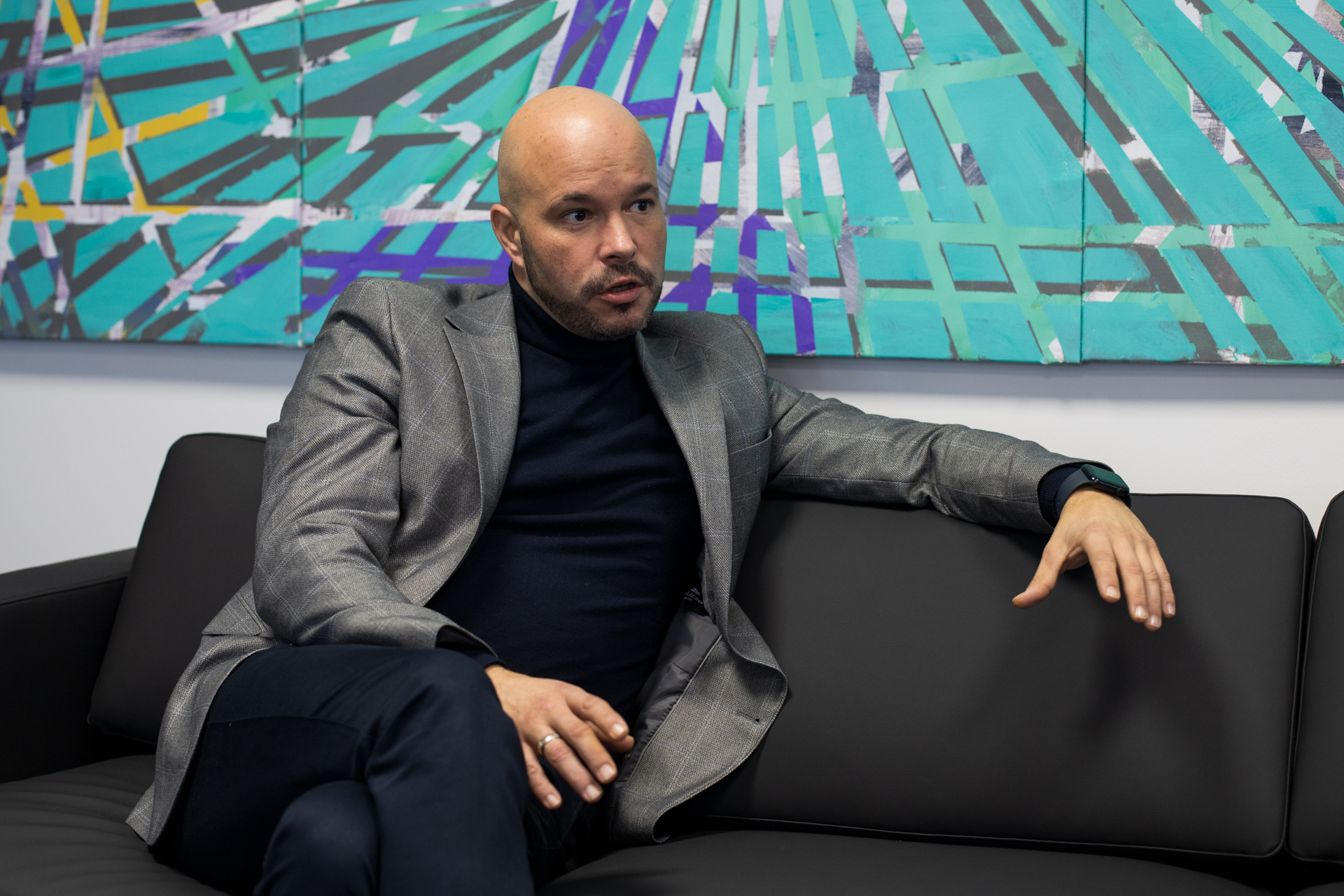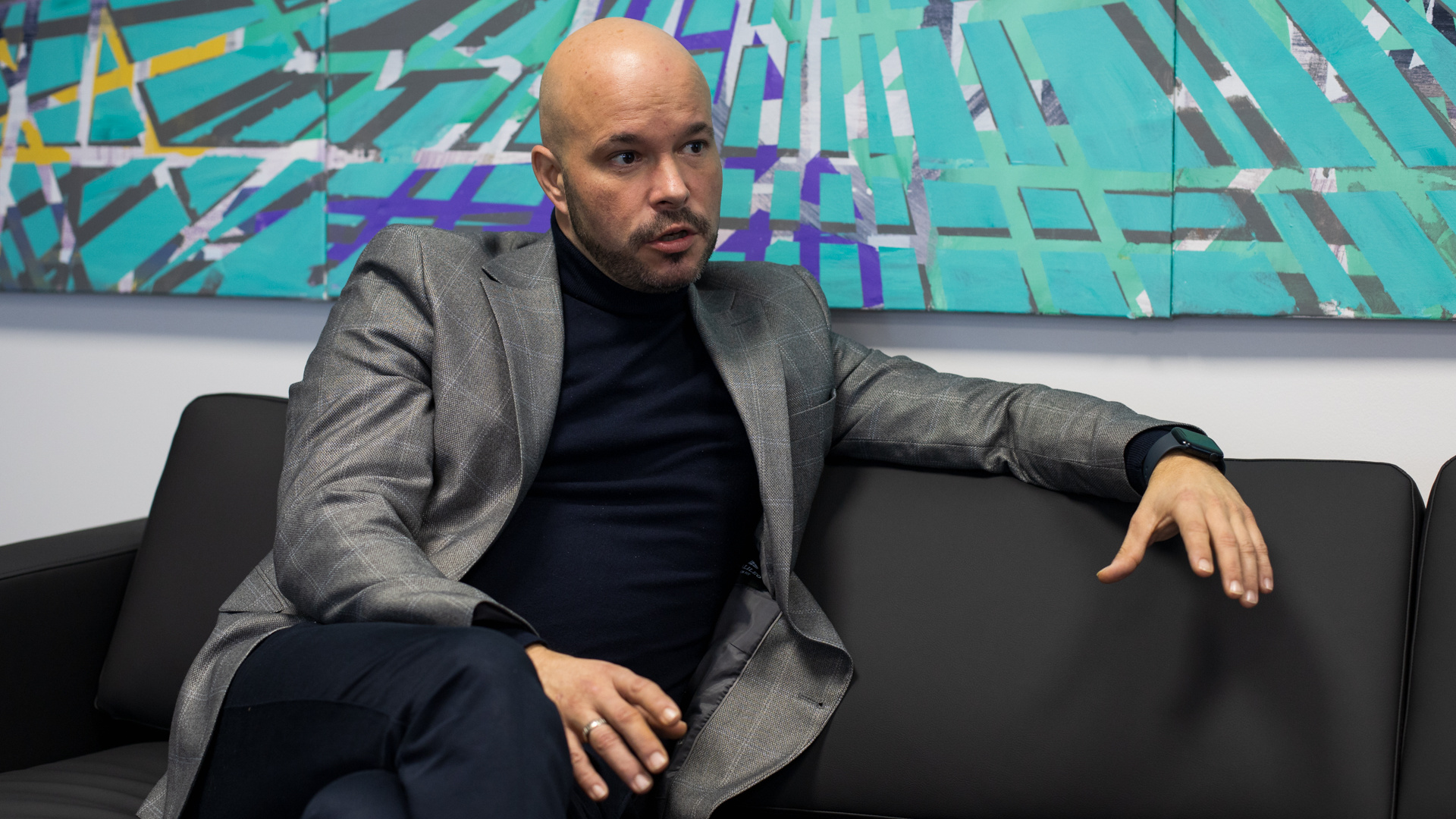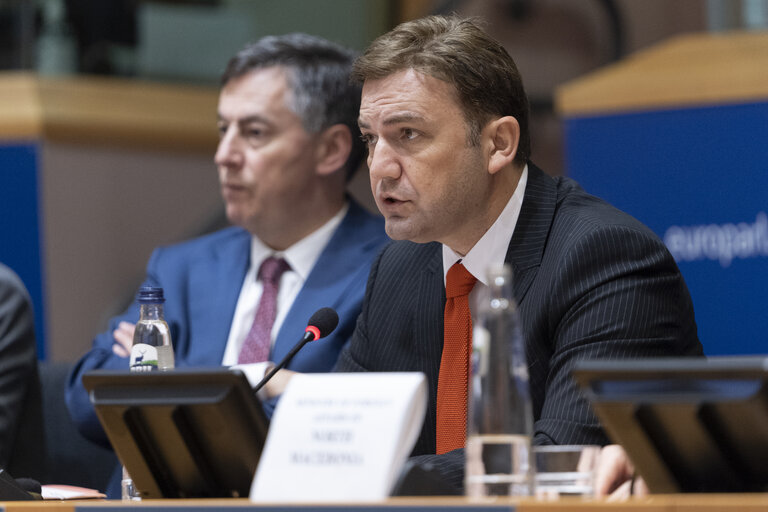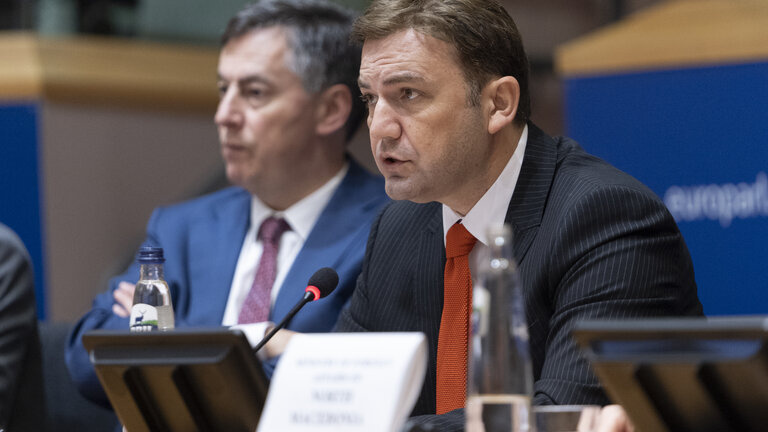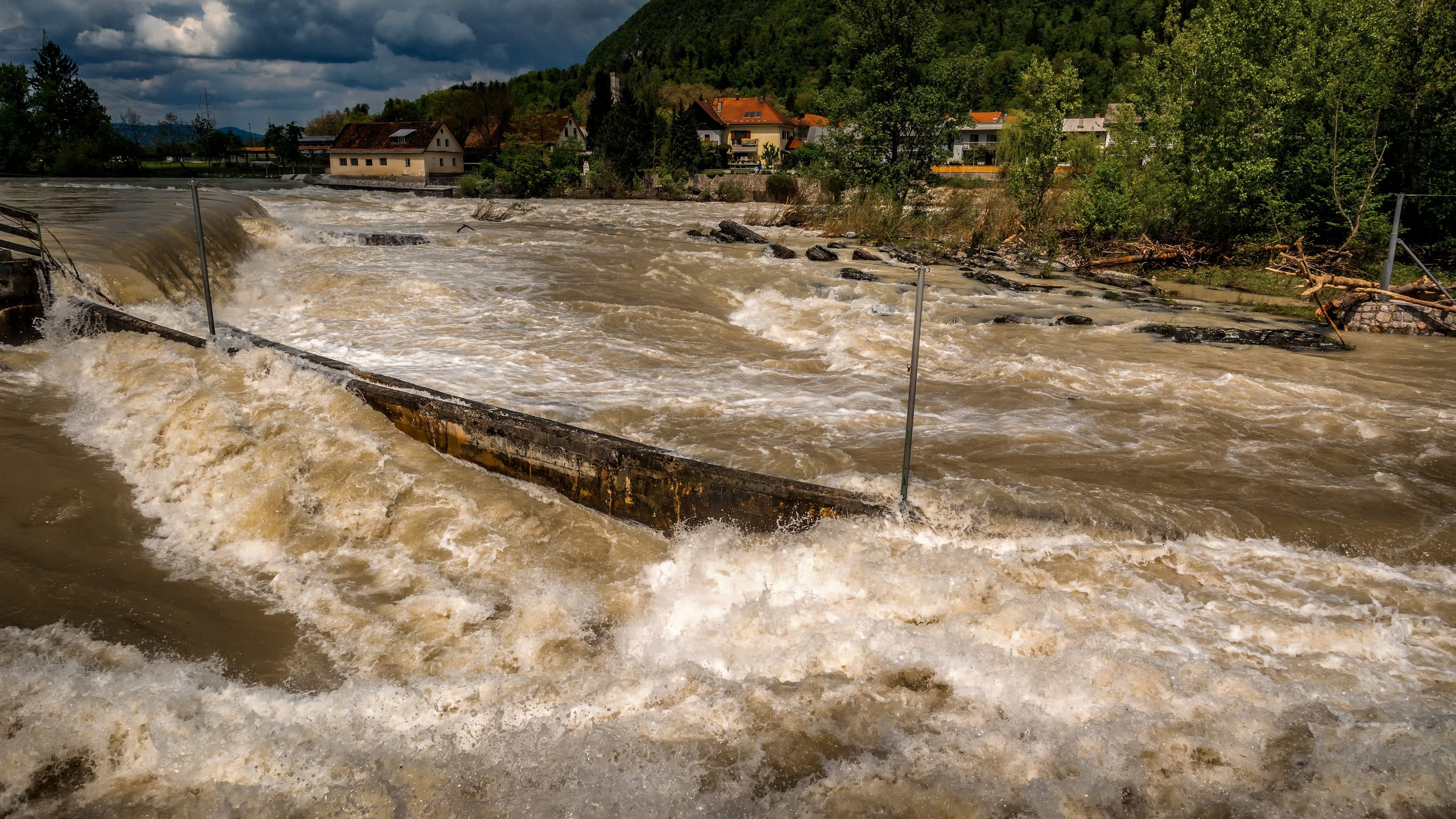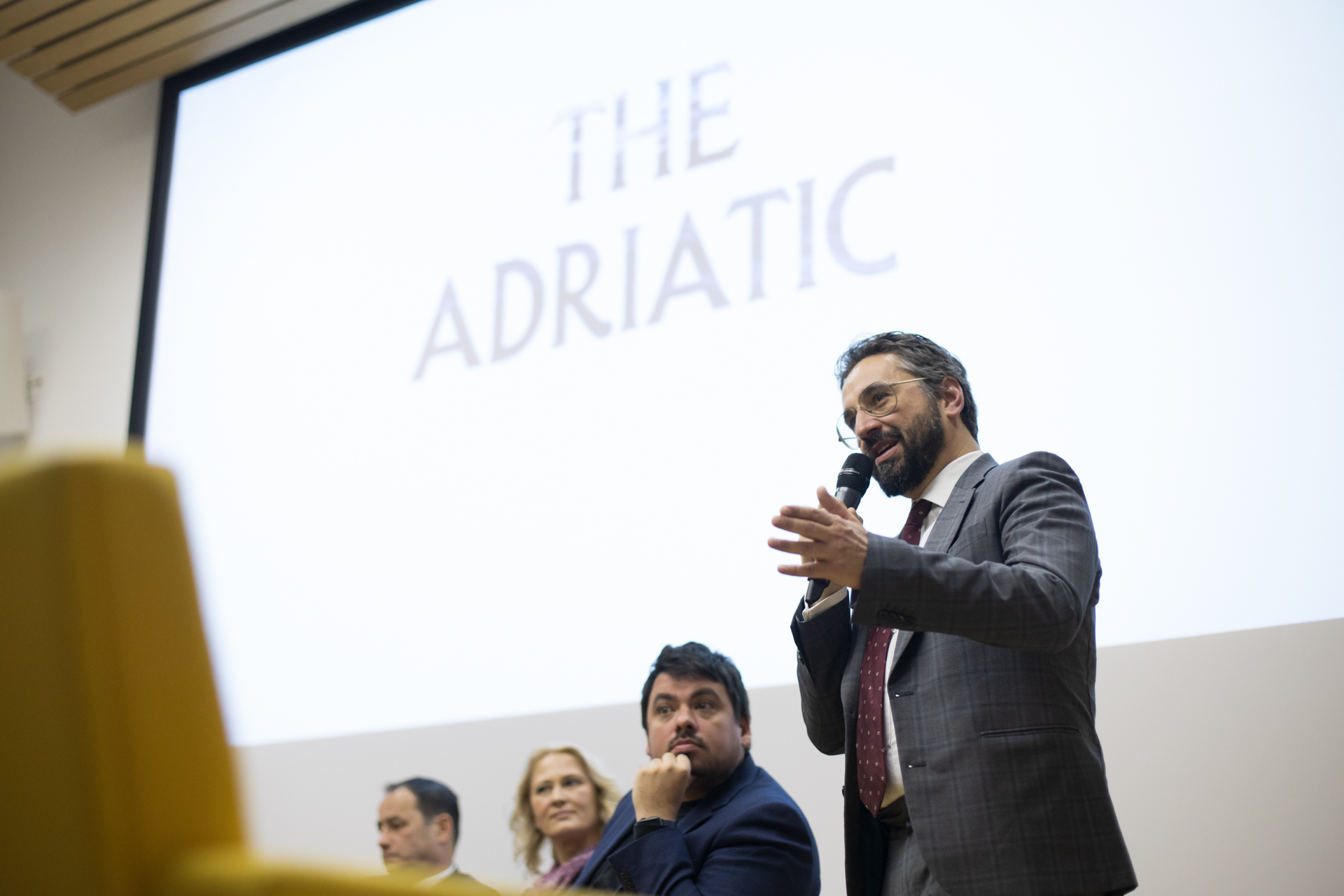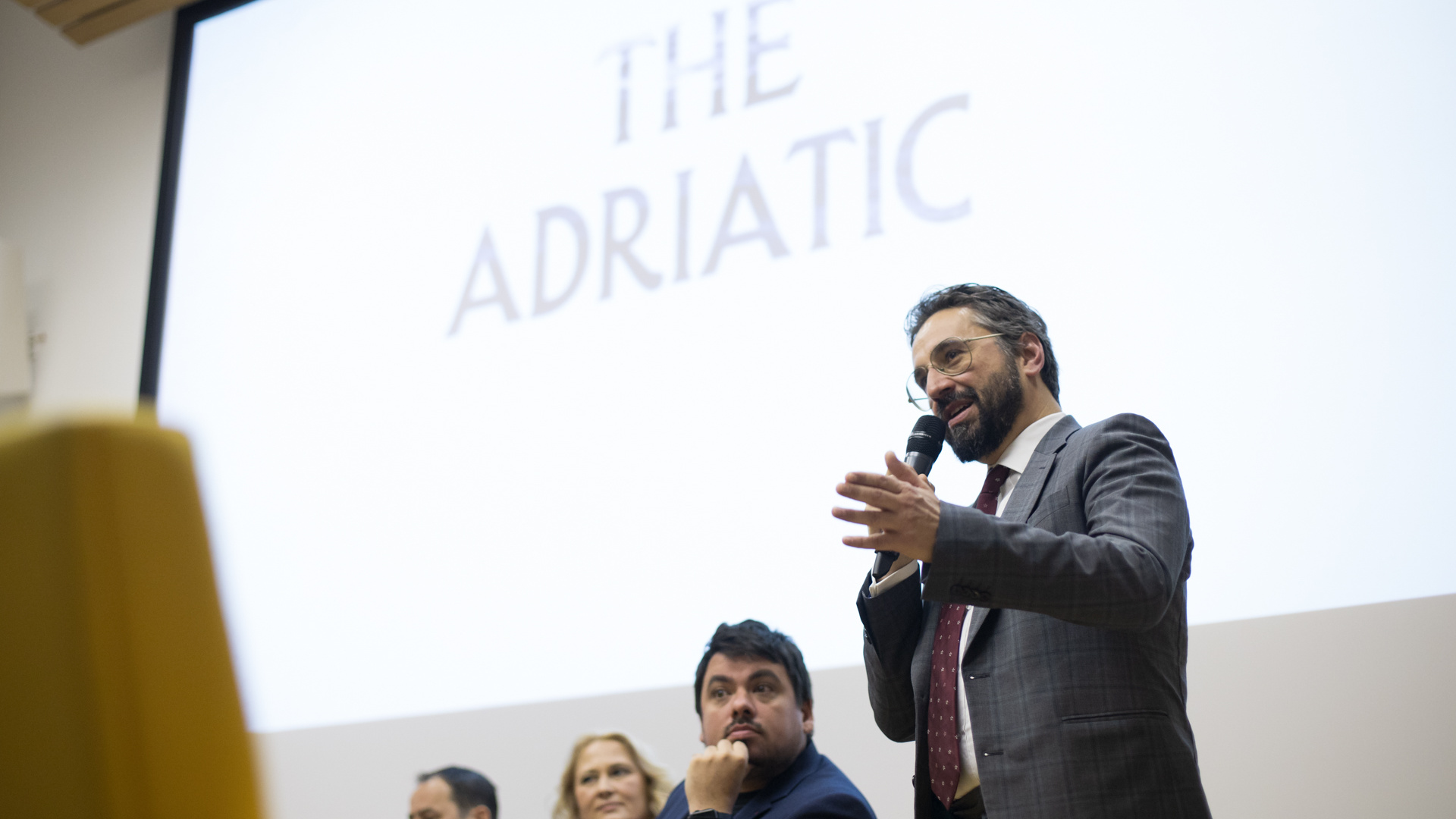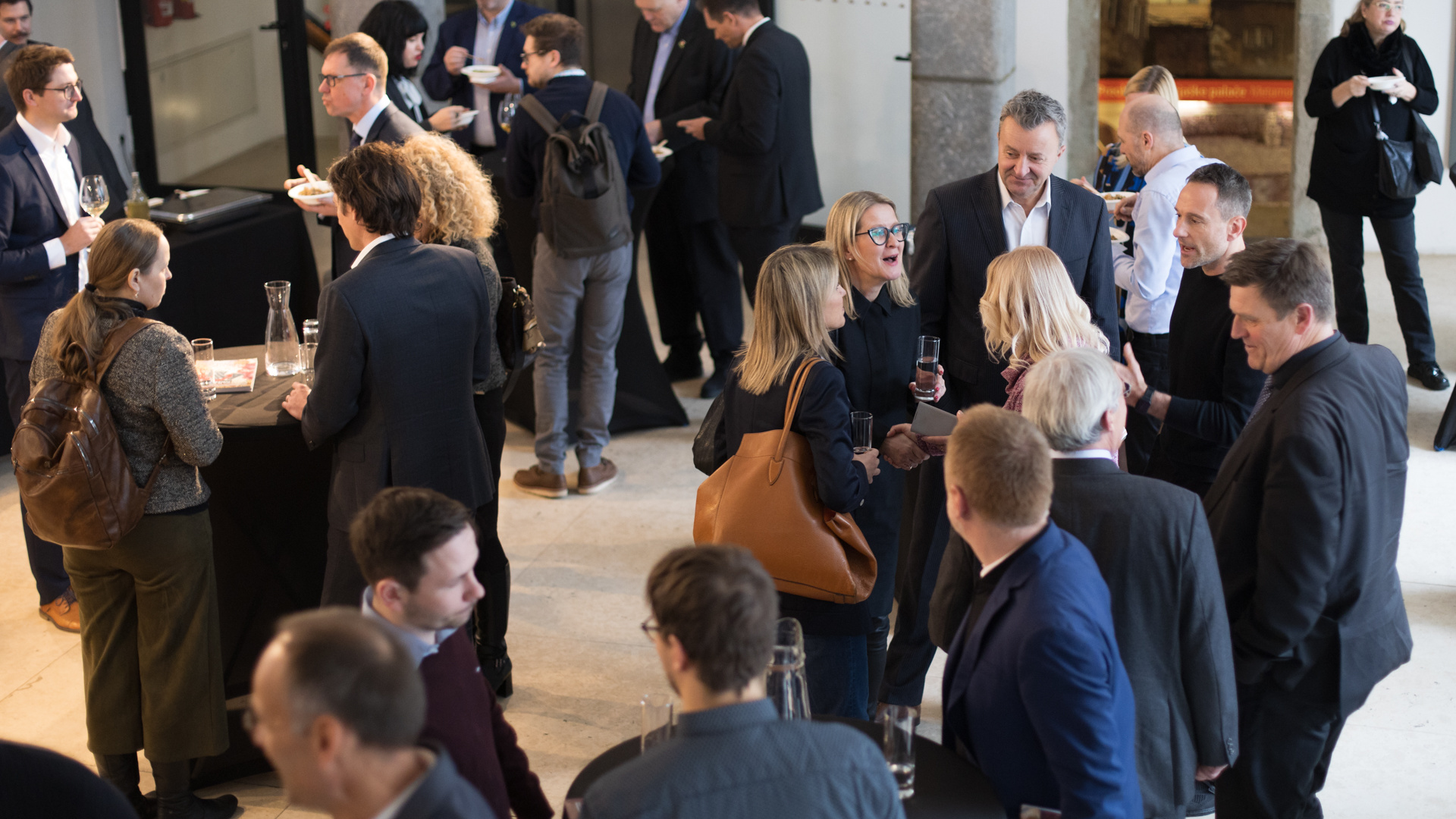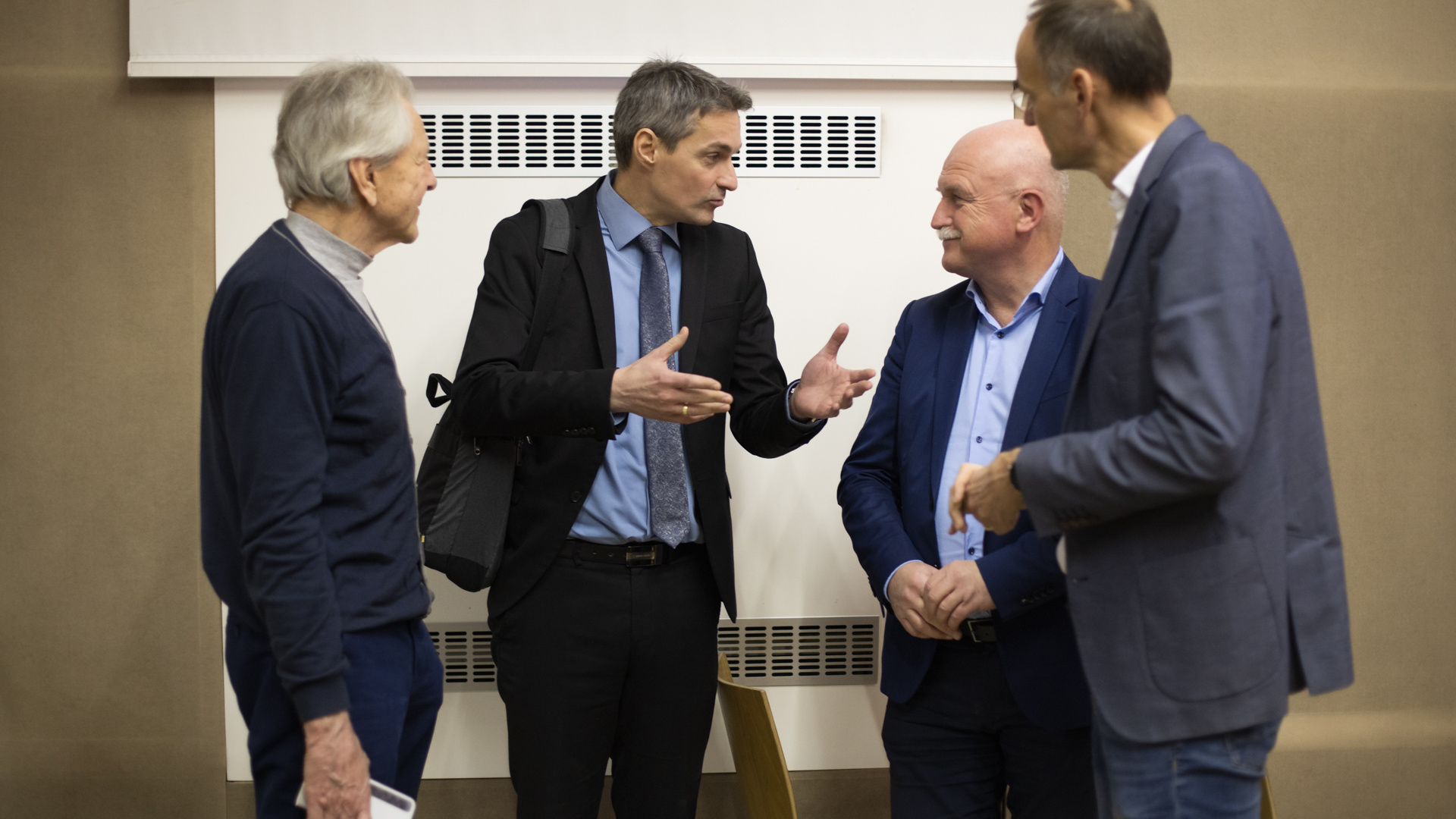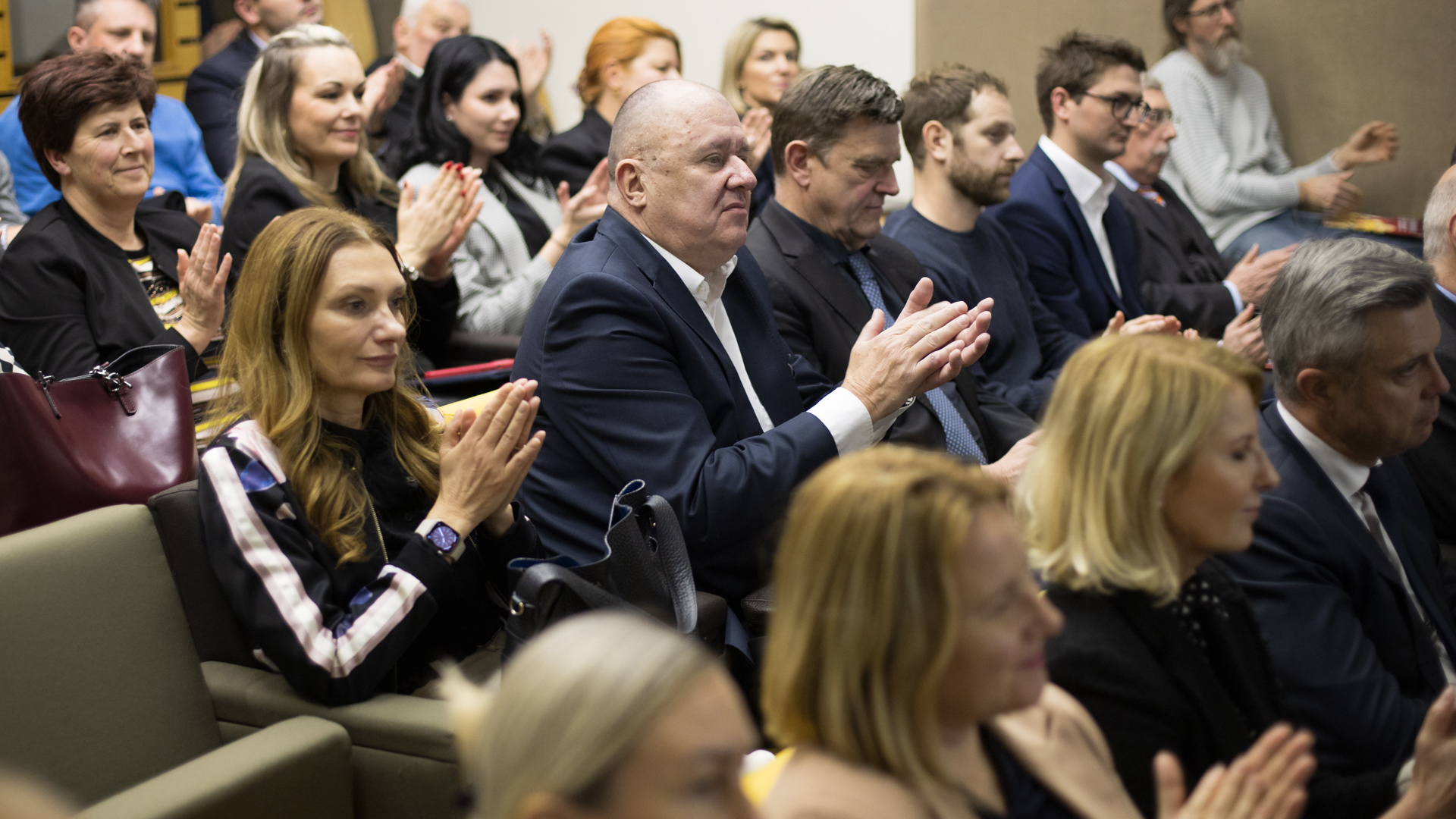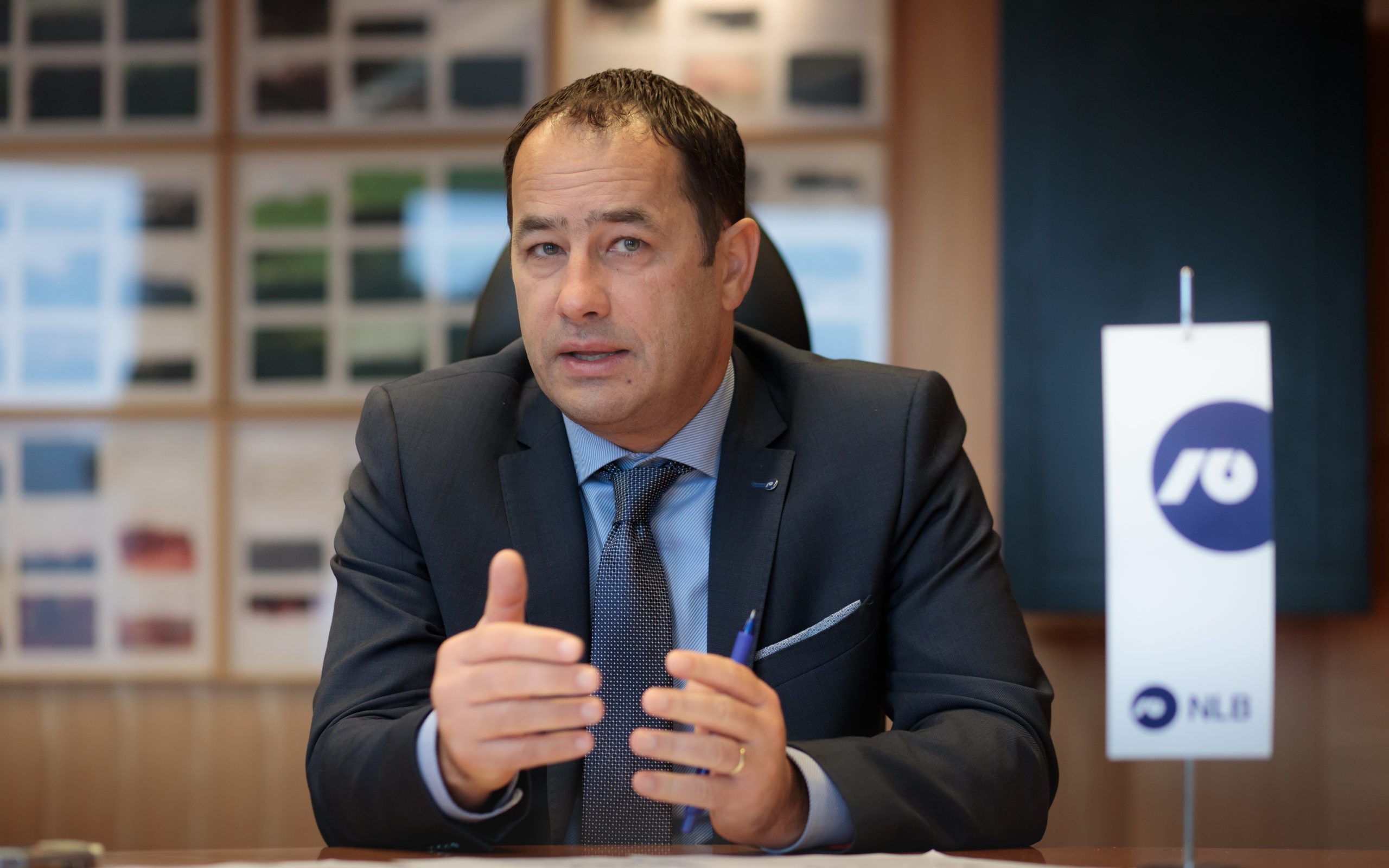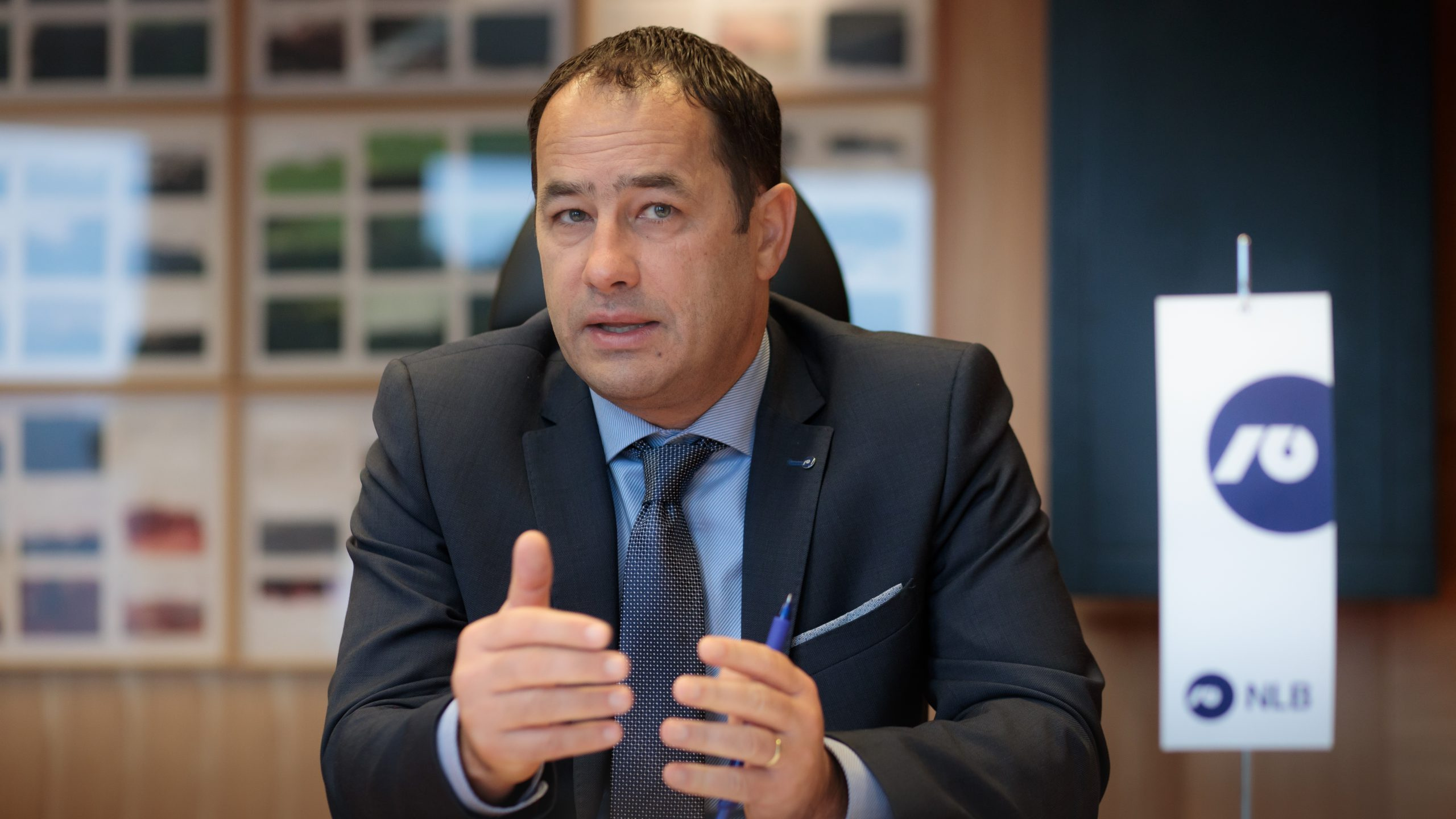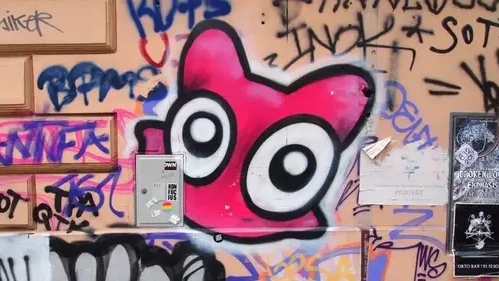Navigating the Logistics Horizon
editor
In the ever-shifting landscape of business, the recent transformations in the logistics services market demand a swift and agile response. InterEuropa not only recognizes this imperative but embraces it, committing to customise services and processes in sync with clients' demands and the wider market trends.
The logistics giant’s operational flexibility enables them to dynamically adjust transport capacities, seamlessly adapting to the ebb and flow of cargo structures.
A distinctive feature setting InterEuropa apart lies in their proactive approach to the optimisation of logistics processes. With a capable development team in tow, they collaboratively design bespoke business scenarios and models, seamlessly integrating them into their information system. The adept utilization of electronic data interchange not only streamlines procurement and sales supply chains but also positions InterEuropa as a seasoned provider of comprehensive logistics services.
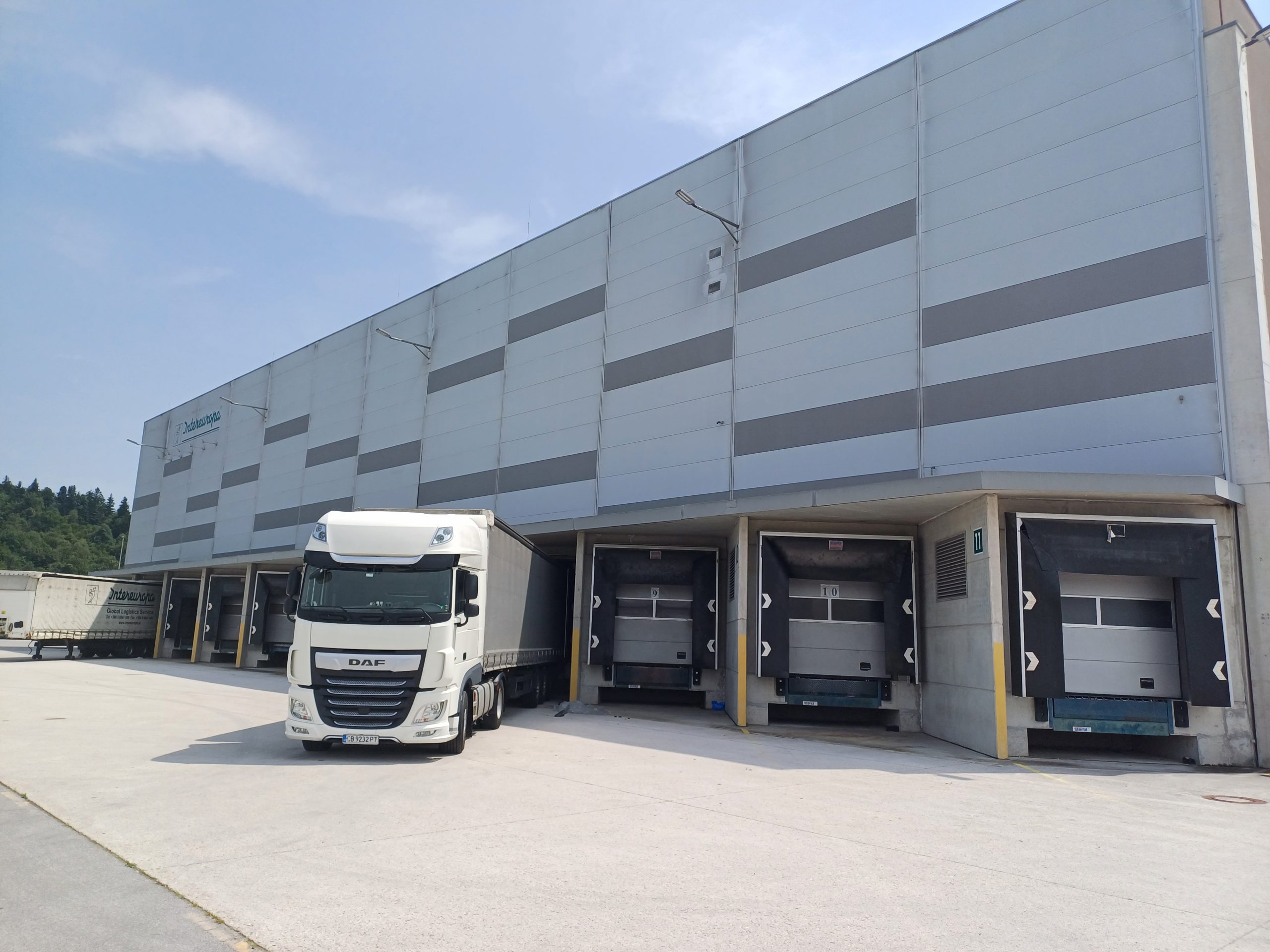
As a testament to their forward-thinking ethos, InterEuropa is pioneering a green transition within the logistics realm. Recognizing the imperative of a low-carbon economy, they channel efforts into reducing environmental footprints, curbing greenhouse gas emissions, and aligning with stringent energy laws and European environmental directives. This commitment extends to their global logistics services, meticulously planning and coordinating resources and services from origin to consumption.
THE ADRIATIC
This article was originally published in The Adriatic Journal: Strategic Foresight 2024
If you want a copy, please contact us at info@adriaticjournal.com.
Greenovated transition: Slovenia's sustainable shift
editor
Špela Bizjak & Jan Tomše
JOURNALISTS AT THE ADRIATIC
In this exclusive interview with the Adriatic, Matevž Frangež, State Secretary at the Ministry of Economy, Tourism, and Sport in Slovenia, unveils the country's strategic vision for the future. Focused on the ambitious initiative Greenovated in Slovenia, Frangež discusses Slovenia's commitment to decarbonisation, the cultivation of new industries, and its appeal to high-tech companies. Highlighting the pivotal role of innovation and sustainability, he offers a glimpse into the nation's transformative journey towards a greener and economically vibrant future. He also reinforces Slovenia's dedication to economic integration in the Adriatic region and points to its potential as a European hub for strategic green technologies.
What is your assessment of the current economic climate, globally and in the markets that are relevant and important for Slovenian exporters in the Adriatic region?
It is obvious that we have entered a period of the greatest economic changes in history. These changes are driven by a variety of interconnected shifts – climatic, technological, geostrategic, social. In light of this, it becomes imperative for economies, including Slovenia, to adapt to the unfolding dynamics of the new era.
How do you think this can be done?
The changes we are talking about need certain adjustments in several areas. On the one hand, we must reduce the carbon and energy intensity of our industries. On the other hand, Slovenia’s strategic focus is to rapidly increase its added value. All this aligns with the rise of new technologies, with artificial intelligence being one of the most important drivers of this restructuring. It’s basically a mix of changes affecting all industries.
Our common consideration is how to design an economic policy geared towards positioning Slovenia among the victors of this time. These big changes determine exactly that – emerging winners and unfortunate losers.
Slovenia: innovative developer and trendsetter
“Guidelines for formulating economic policy are defined by various umbrella documents, such as the Slovenian Industrial Strategy. It holds true that some strategic foundations were not laid out at a time when the changes we are witnessing today were not as apparent. After the adoption of the Slovenian Industrial Strategy, events like the onset of the COVID-19 pandemic, the war in Ukraine, and consequently the energy crisis unfolded. During this time, Europe recognised the need for a sustainable, digital transition in the supply of energy, raw materials, and strategic technologies,” emphasises Matevž Frangež.
“At the ministry, we’ve prepared an action plan to increase competitiveness, which we can also call a strategic blueprint for economic transformation. This initiative prompts public debate Slovenia’s ambitions to become a new European hub for the development of advanced and green technologies,” he explains.
“So that we can change from being a competent and reliable supplier today to an innovative developer, especially in the field of technologies, which today largely represent a disruptive element in the global economy – on the one hand, green tech, on the other, advanced technologies such as is artificial intelligence, blockchain etc. Of course, also in several sectors where it appears that Slovenia can be a niche, very important and excellent player – biotech, a small but interesting space sector, food tech, etc.”
The Ministry has an ambitious project called Greenovated in Slovenia, focused on strengthening innovation, developing new solutions, and consequently increasing Slovenia’s broader visibility. What does Slovenia want to be recognised for?
Our initiatives are geared towards making our future greener with eco-friendly solutions – now a universal and ultimate requirement for every business. According to a PwC survey, 50% of Slovenian companies believe that climate change will not have a significant impact on their operations. This same percentage of companies very likely believes they will not be affected by the artificial intelligence. Looking at this pessimistically, it’s a sign that half of the Slovenian economy is not prepared for big changes. On a more positive note, half of the companies recognise how megatrends can influence their business.
The scale of these changes requires adjustments, even in individual industries. Slovenia is strongly embedded in European industrial networks, particularly in the automotive industry, which faces substantial upheavals amid the shift to electric mobility. Slovenia has the ambition to fortify its economy with a greater share of finished products, as well as domestic brands, which will be the outcome of Slovenian knowledge, innovation and design tailored to global demands.
Can you outline the measures under the consideration at the Ministry aimed at accelerating innovation?
In this era marked by a revival of industrial policy, investors are coming to Slovenia, they are interested in how our country, as an EU member, competes with its European counterparts in providing incentives for their investments. To bolster our competitiveness, we must create a predictable business environment. In today’s unpredictable global landscape, Slovenia, given its small size and significant international involvement, must ensure its internal systems are flexible enough to effectively react to the ongoing changes. The goal is to remain steadfast in turbulent times, always act as an internal, compact, and resilient entity, capable of flexibly adapting to external changes.
The three pillars of Slovenia's innovation outreach
1. DECARBONISATION AND UPGRADING THE EXISTING INDUSTRIES
“Slovenia’s economy is above average energy-intensive, primarily due to being a substantial supplier of materials such as aluminium, steel, glass, paper, plastic, and magnets. The production, processing, and customisation of these materials requires a lot of energy. Decarbonising these industries is undoubtedly one of the most important strategic tasks of our time,” warns Matevž Frangež.
“The ministry is preparing Repower EU measures totalling EUR 42m, combined with a mix of refundable resources, as well as a combination of non-refundable and refundable incentives for companies transitioning towards a reduced carbon footprint. What companies produce is equally important – whether they rely on using a lot of energy to produce conventional materials or demonstrate a capability to develop new materials for light weight design and construction. In Slovenia, we know how to produce effective solutions. Slovenia’s strategic ambition must be to move up the value ladder and strengthen its development competences.”
2. NEW PRODUCTS AND NEW INDUSTRIES
In this context, we focus on a very dynamic and diverse start-up ecosystem, uniquely organised into niche domains. “Slovenia has groundbreaking technologies in a number of fields, from mobility to bio tech – the latter stemming from the highly developed pharmaceutical industry. Worth to mention other examples as well, such as Juicy Marbles in the food tech sector and Elaphe in the automotive industry which introduced engines with a new, revolutionary architecture,” Frangež highlights.
“Ensuring good conditions and connectivity of the startup ecosystems imperative for the development of ground-breaking solutions. Additionally, Slovenia hosts Podim, one of the most important startup conferences in this part of Europe. At the same time, we have to make sure that we strengthen investments and financing, attracting venture capital, which is almost completely absent today,” says Frangež. He underscores another vital measure: “We want to activate more private capital through the Slovenian Enterprise Fund to make it easier for startups to obtain funds on the capital markets, which are too shallow in Slovenia. In this regard, our Ministry actively cooperates with the Ministry of Finance to design the capital market development strategy. Our goal is to develop a capital-driven mechanism that not only helps in the establishment and growth of companies but also propels them towards greater scalability. This, in turn, plants the seeds for emerging industries that will propel us into a new era.”
3. ENHANCING SLOVENIA'S APPEAL FOR HIGH TECH
In the pursuit of making Slovenia more appealing to global high-tech companies, the focus is on measures such as increasing research and development funding and implementing an ambitious stimulus policy. »If we want to become a European hub for innovation, we must enhance the appeal of our business environment for foreign labour, particularly high-tech personnel – here, above all, better net salaries for top talent. The intricate and time-consuming procedures in obtaining documentation for foreign workers also cannot be overlooked,. Challenges await us when it comes to placing investments in the space,” says Frangež. As he explains, it is a connected set of challenges that they want to tackle with the action plan, kickstarting the process with an initial phase involving public debate. “Slovenia lacks a social consensus on what we want to become as a country. Economic policy is the fundamental to our country, and we want to contribute to shaping this consensus through the implementation of the action plan,” he emphasizes.
Could we reflect on the recruitment of the high-tech personnel? These are talents that deliver substantial value through their expertise and groundbreaking solutions.
Through an extensive tax reform, our focus needs to be on alleviating the burden on labor while simultaneously adjusting property taxation upwards. Indeed, if the ambition is to position ourselves as a new European hub for innovation, maintaining low property taxation is not a magnet to help us achieve this objective. On the other hand, the magnet is a more competitive taxation of labour, recognising its pivotal role as a key development factor in generating innovation, knowledge, and creativity.
The action plan I’m referencing is precisely aimed at this coordination: to engage in concrete discussions about our economic vision and related measures. On one front, these measures are the responsibility of our ministry and we can feasibly realise them independently. On the other front, it involves measures that must be achieved through an interdepartmental approach if we want to realise the mentioned vision. But first we need to know where we want to go, so that we can then integrate the various measures into a whole that will effectively propel us towards achieving our goal.
Within the ministry, what solutions are being considered to speed up the processes for obtaining permits for highly qualified foreign individuals?
While our ministry isn’t primary responsible for key licensing functions, we are very interested in helping to make this important transition. We recognise talent is a pivotal driver for innovation and technological advancements – we proposed a re-evaluation of the “fast track” system for high-tech profiles some time ago. Under the proposed procedure, upon the submition of a complete application, a permit to work and reside in Slovenia is automatically issued. Subsequently, the administrative body would validate or revoke the permission based on whether the stipulated conditions are met. This would enable better access to global talent in the economy, while maintaining the necessary safeguards in the system. Notably, a comparable system was effectively implemented by Germany last year, which recognises, as we should all, that labour is one of the key inputs in the economy.
Countries compete with each other, so we need to strengthen our competitiveness. And Slovenia holds quite a few advantages: a safe community, fantastic conditions for a high quality of life with exceptional opportunities for contact with nature, sports, and recreation, as well as a solid education system, inclusive and accessible universities and globally competitive research institutes. Our strengths extend to an excellent location, beautiful natural landscape, not to mention that we are a ‘wine and culinary superpower’. This network of advantages is crucial to position ourselves as a green destination for life and work. To this we must add friendly, fast procedures and implement a tax reform that will alleviate the burden on labour.
How would you evaluate the position and role of Slovenia in the Adriatic region?
Undoubtedly, Slovenia’s path serves as an example for many in the Adriatic region. As a country, we have largely successfully navigated the processes and challenges facing the region. The goal is clear: prompt and complete integration of the Adriatic countries into full EU as soon as possible. I am confident that current geopolitical and geostrategic circumstances will make it possible.
In Bled we finally agreed on the timelines and concrete strategies to stimulate the region’s economic integration into the EU internal market. We now have a destination and a clear path. The objective is to increase investments and improve economic infrastructure in the Adriatic region, a goal Slovenia is committed to supporting, both politically, with a lot of knowledge and experience about opportunities in the EU internal market, and practically through the direct engagement of our companies, which are strongly present in the region, particularly in banking and insurance.
From a political-security and civil society point of view, how significant is the progress and inclusion of the Adriatic region in European integration?
The economies of the Adriatic region will do better, while the risk of potential conflicts will diminish. I truly believe in the potential of this region. I am convinced that we are significantly more complementary than competitive. As a society, we share a certain affinity with this area, embodying a blend of German precision and engineering brilliance on one side, and a Mediterranean laid back attitude on the other – a reminder that life extends beyond work.
To conclude: what are the key resources that Slovenian companies need for a green, sustainable transition?
I would emphasise the more efficient use of resources, including energy, and the creation of new value that will push us further up the supply chains. Take, for example, eco–design, which designs products to enable their recyclability and extended lifespan. At the highest level, we have the Net Zero Industrial Act serving as the European Union’s strategic framework that defines how to utilise and enforce strategically important technologies necessary for the green transition. There is a whole range of strategic technologies being developed in Slovenia, from wind technologies to carbon capture storage, heat pumps, and nuclear technology. Today, Europe is significantly dependent on China for many of these technologies. This underscores an opportunity for Slovenia to step in with its knowledge and products as a provider of innovative solutions.
THE ADRIATIC
This article was originally published in The Adriatic: Strategic Foresight 2024
If you want a copy, please contact us at info@isr.si.
Open Hearts and Closed Doors
editor
Andraž Tavčar
JOURNALIST AT THE ADRIATIC
A man with a concerned expression, wearing a sharp orange tie, speaks earnestly into the microphone. He is framed by the solemnity of a conference room ― his eyes bearing a weighty resolve, surveying the unseen, while those around him blur into the periphery of his focus.
If there was a scene that could capture North Macedonia’s travails with EU enlargement, it would be this. Agitated yet determined, the country has been caught in a state of perpetual limbo since it first began its rapproachment with the bloc at the turn of the century.
While President Michel has pledged that the EU will be prepared to take in new members by 2030, the future for the country’s EU aspirations appear more unpredictable than ever.
The Greek Oxi
Beginning in the late 90s, North Macedonia was the first of its former Yugoslav brothers to shake hands with the West, sealing a NATO membership action plan in ’99 and an EU stabilisation and association agreement in 2001.
By 2005, buoyed by its newfound status as a candidate country, North Macedonia appeared on the cusp of securing NATO membership. However, its ambitions hit a snag. At the 2008 NATO Summit in Bucharest, Greece exercised its veto power, citing concerns that Macedonia’s erstwhile name harbored latent territorial claims over its own northern province, also named Macedonia.
Then, when the European Commission gave the thumbs up for membership talks in 2009, the old Greek name game reared its head again.
In the ensuing decade, the political stage was dominated by a heady mix of politicking and populist fire, where the stubbornness of Nikola Gruevski’s nationalism in the country clashed head-on with a revolving door of equally unyielding Greek governments.
Despite the United Nations playing mediator, progress was sluggish, with few tangible results achieved over the years.
Turning point
The political landscape in Greece underwent a significant change with the rise of Alexis Tsipras, while North Macedonia experienced an equally notable political upheaval in 2017 that paved the way for Prime Minister Zoran Zaev. A year later, these two leaders would come together at Lake Prespa.
“The then socialist governments, with PM Zaev and Syriza’s Tsipras at the helm, managed to reach something of a diplomatic coup,” observes Matjaž Nemec, a Slovenian S&D MEP and member of the European Parliament’s Committee for Foreign Affairs. He points out that the Prespa Agreement – as it’s been dubbed – was pivotal for the Western Balkans. The landmark deal served as an example in untangling the web of issues that had long ensnared countries in the region, addressing concerns on both a bilateral and multilateral basis.
“Crucially, after the agreement was signed, Greece has consistently refrained from readdressing or contesting matters concerning North Macedonia’s name or its path to accession in any EU institutional fora.”
New hurdle
Post-2018, a new obstacle emerged due to disagreements over history with another EU member state, Bulgaria. Its insistence on addressing perceived “anti-Bulgarian ideology” in North Macedonia threatened to impede the latter’s EU accession process.
“As the Bulgarian issue gained more tangible prominence in 2019, and particularly in 2021, it brought into question the very agreement itself, rendering Bulgaria’s actions akin to a double-edged sword. This strategy effectively escalated a domestic political issue to a matter of international, or more precisely, European importance, elevating it to a dispute between two nations.”
Although some Bulgarians had previously expressed these concerns, their assertions were relatively minimal, and, for Nemec, it’s “incomprehensible” that Bulgaria hadn’t raised these issues at least concurrently when Greece had.
It nearly seemed like a replay of the Greek saga, but the EU had been roused by an outbreak of a war on its periphery. With Russia’s invasion of Ukraine, Western Europe’s appetite for enlargement revived as it sought to secure its values and its borders.
Incidentally, it would be the French under president Emmanuel Macron, that offered the Macedonians a way out of their stalemate. The so-called ‘French Proposal’ introduced a framework that mandated the country acknowledge the Bulgarian community within its own constitution, and the Sobranie, North Macedonia’s parliament, only tentatively voted it through, considering the minuscule census count of some three thousand citizens identifying as Bulgarian.
Charting the course
As a shadow rapporteur on the 2022 Commission report on North Macedonia, Nemec played a significant role in overseeing and contributing to the European Parliament’s evaluation of the country’s progress towards EU membership.
“We were faced with the fact that a report on a candidate state was not adopted, primarily because it had been overly influenced by a bilateral or Bulgarian agenda.”
He explained that as Skopje was trying to wrangle the necessary number of votes needed to change the country’s constitution, negotiations between the different political groups for a resolution on the report were underway in the European Parliament. The S&D, Greens and the Left political groups voiced their disagreement over the proposed text and the rapporteur, coming from the ranks of Renew, was subsequently forced to withdraw the progress report.
Nemec explained their strategy aimed to moderate the Bulgarian influence on the resolution. “We wanted to slightly temper or limit the process, believing that adopting a resolution aligned with the Bulgarian stance might have implications on the North Macedonian negotiations regarding the essential constitutional amendment.”
He candidly acknowledged the limitations of steering such an affair, admitting that “no one can control the entire process, not even the two or three biggest political groups.”
Despite the shared goal among North Macedonia’s political factions for EU membership, Nemec expressed concern over the diminishing allure of the European story ― not just in North Macedonia but across the EU, as well. He cautioned that should the EU fail to promptly respond to the aspirations of the Western Balkans, they could drift towards other regional or global influences. “These changes might result in alliances that are either misaligned or even anti-European.”
North Macedonia’s European path has been marred by tense relations with its neighbours and an EU that seemed stuck on the precipice at the end of history, overconfident of its economic relationship with Russia and the carrot it perpetually dangled over the Western Balkan states. The promise of membership always there but never quite in reach.
With all the country has sacrificed, North Macedonia stands out among the now enlarged pool of candidates. But the path ahead is muddied by a crucial election that could sidetrack the EU’s reemergent vim. EU-wide elections in June risk diverting focus to more inward-looking concerns as the far-right parties lead in the polls. Inflation, the energy crunch, escalating living costs, security crises, migration, healthcare, and climate change are poised to amplify public apprehensions, creating an ideal breeding ground for populist rhetoric.
The common advice to candidate countries by the EU is to “do your homework.” But if the school is in disarray, what’s the use?
THE ADRIATIC
This article was originally published in The Adriatic: Strategic Foresight 2024
If you want a copy, please contact us at info@isr.si.
Untamed Nature and the Regional Economy
editor
Jan Tomše
Extreme weather events, such as heavy rain, storms, and hail, have become more frequent in Slovenia and the region, with last year seeing record flood damage that led to significant losses for both individuals and businesses. The Triglav Group, a prominent insurer, had to pay out an unprecedented sum, estimated at EUR 150-200 million, primarily for flood damage. To tackle the new challenges, the insurance industry is developing new products and expanding existing index insurance options to cover climate-related risks like droughts and floods.
These weather events have not only impacted individuals, but business suffered significant losses, too. The Triglav Group, a leading insurer, has paid out unprecedented compensation sums in Slovenia and the region, especially for flood damage. The payouts, totalling an estimated EUR 150 and EUR 200 million, include damages from storm surges, hail storms and floods. Taking into account reinsurance protection, these payouts are estimated to have a negative impact on the Group’s operating results, in the range of EUR 40 to EUR 50 million. Despite the challenging environment, the insurer emphasises it maintains an adequate level of capitalisation and liquidity.
Data for the last 20 years shows that last year was the worst year on record for losses caused by nature’s events. The second worst was 2008, when insurers paid out EUR 95 million in natural catastrophe claims, of which hail accounted for EUR 47 million. Recent events have caused a surge in insurance requests but the insurer notes this is to be expected: the awareness of the importance of insurance protection increases with the occurrence of extreme weather events, but tends to diminish with the passage of time.
Despite the current rise in interest for coverage, the Group estimates around one third of real estate owned by private individuals in Slovenia is still uninsured against any peril. This proportion is even higher for businesses, as only a few percent have adequate insurance against flood damage. The insurer says there are viable options for businesses to mitigate risks, including extending fire insurance to cover floods or opt for combined insurance. The third option is to cover costs or profits in the event of loss of income due to business interruption. This is the loss that occurs if the business is unable to operate.
“This, together with the increasing frequency and severity of such events, will put pressure on reinsurance prices, increase the risk of property insurance portfolios and intensify the need for insurers to raise additional capital. Ensuring adequate protection will continue to be of key importance in the future, taking into account changes and restrictions on reinsurance conditions,” Triglav Group says.
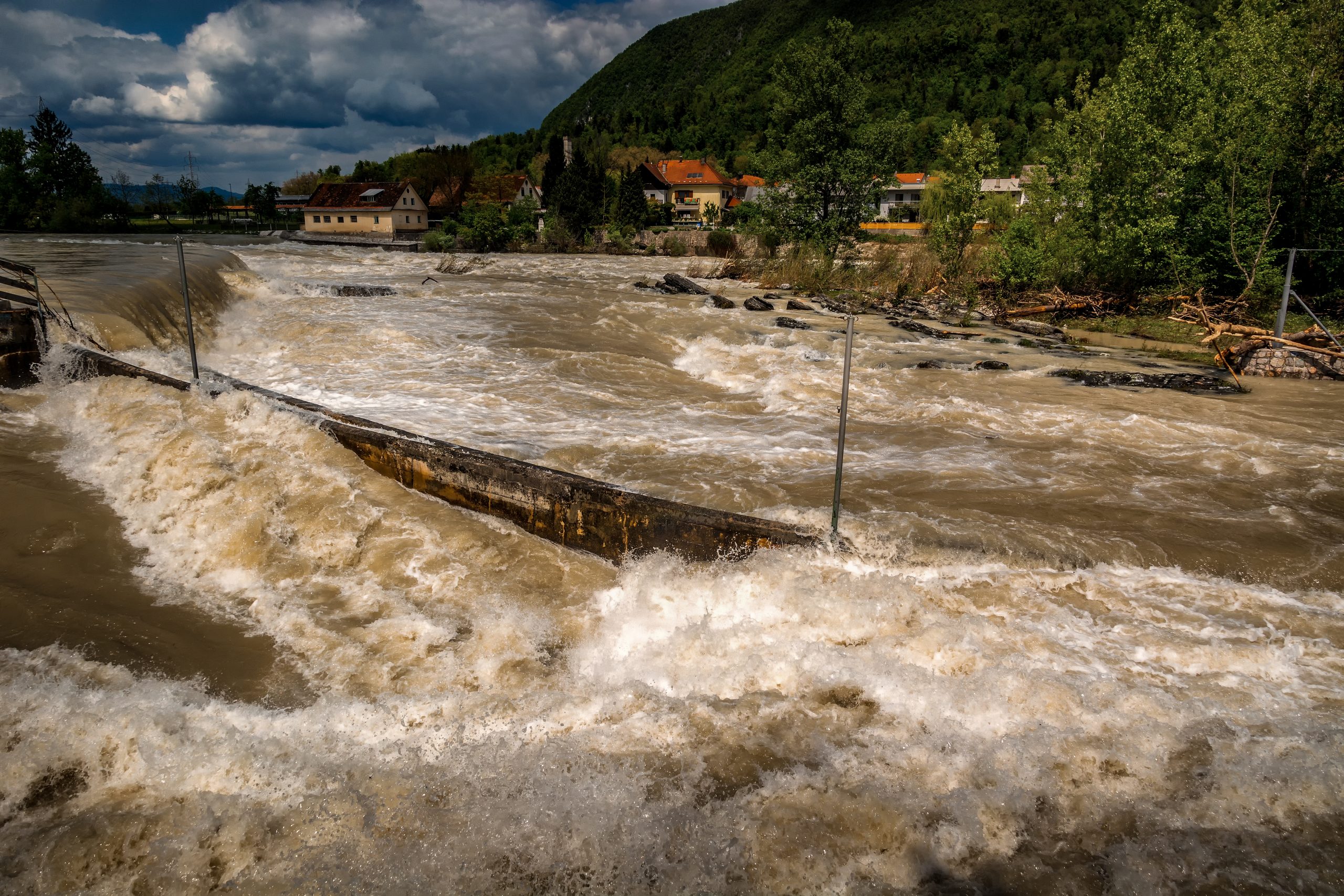
Lack of awareness
While extreme weather events have recently dominated headlines, earthquakes receive less attention, despite Slovenia and the region being located in a very active seismic zone. The area has been hit by major earthquakes in the past including the 1976 earthquake with epicentre in Friuli, Italy, and earthquakes in the Posočje region in 1998 and 2004. In 2015, an earthquake shook the grounds in the Gorjanci near the border with Croatia. The end of December 2020 saw a magnitude 6 earthquake striking Petrinja in Croatia, resulting in seven fatalities, highlighting the persistent seismic threat in the region.
Two years ago, seismologists and geologists from the Slovenian Environmental Agency and the Geological Survey of Slovenia have produced an updated earthquake hazard map for Slovenia. The map reveals that the areas with highest seismic risk are in western Slovenia and in a belt that runs across the whole of Slovenia from northwest to southeast, particularly west of Bovec near the Italian border and the Dinaric fault system in western Slovenia. While Bovec and Brežice are identified as seismically most active areas, northeast of Slovenia and Primorska region are at the lowest risk.
Despite the seismic threat, the Triglav Group says there is still a significant lack of public awareness about the risk. This is quite perplexing considering that catastrophic damage poses a significant threat to an individual’s financial security, given that property is often a person’s most valuable asset. The insurer notes that the demand for earthquake cover varies according to the type of insurance taken out. They estimate around one third of those with any property insurance opt for earthquake coverage.
Similar to floods, demand for earthquake insurance sees temporary spikes after hazardous earthquakes in Slovenia’s vicinity, such as those in Croatia, Turkey, and even in Syria. But the increased awareness gradually wanes over time. Earthquake insurance is typically included in the home or business property coverage, with premiums depending on the earthquake zone, the age of the building and the agreed deductibles.
For example, the earthquake insurance premium for an apartment building in Ljubljana built after 1965 would be one third lower than for a similar building built before 1965.
New insurance products
The insurance industry itself is also in the process of adapting to climate change. Insurance companies are not only developing new products but also increasing the representation of existing index insurance products for drought, floods and other cli- mate risks. They are also expanding their portfolio of insurance products in the area of sustainable mobility and offering effective risk protection for companies involved in the exploitation of renewable energy sources, such as solar power plants, wind farms and others. In addition, the Triglav Group is adjusting its approach to insuring coal mines and thermal power plants, taking into account national strategies for phasing out coal and transitioning to a carbon-neutral economy.
“By investing in sustainable companies, we are actively contributing to environmentally sustainable and socially responsible developments, as societal expectations and regulatory requirements in this area will be even higher in the future. This is all part of our commitment to sustainable investing, which paves the way for a greener, fairer and more inclusive society,” the Group concludes.
Triglav Group advises: How to choose the right insurance?
Triglav Group - Forward, sustainably
“We want to play a leading role in integrating global sustainability best practices into our business in the Adriatic region and are able to identify sustainability opportunities and risks. We have formulated our sustainability (ESG) goals for 2025 in four key areas: insurance and asset management, Triglav Group’s business processes, responsible stakeholder relations and effective corporate governance,” the insurance company says.
The Group’s activities include continuous efforts to raise aware- ness among the public, partners and other stakeholders on global development challenges and sustainable behaviour in everyday life. This commitment to the community is manifested through preventive investments and prevention programmes – an important social component of the insurance industry’s sustainable impact – and a number of projects in the areas of transport, fire safety, health, agriculture and education. These initiatives are primarily designed to benefit the most vulnerable groups of people and natural environments.
THE ADRIATIC
This article was prepared in cooperation with Triglav Group d.d.,originally published in The Adriatic Journal: Strategic Foresight 2024
If you want a copy, please contact us at info@isr.si
Charting a Resilient Path
Finance and business
editor
Maja Dragović
Editor of The Adriatic
Institute for Strategic Solutions hosts annual event to launch The Adriatic: Strategic Foresight 2024
The traditional annual event hosted by the Institute for Strategic Solutions took place at the City Museum of Ljubljana, marking the launch of the Institute’s annual publication, “The Adriatic: Strategic Foresight 2024.” This year’s event, titled “Call in Crisis: Macrodynamics, Climate, and Governance Challenges,” centered around understanding global developments driven by environmental crises, the war in Europe, technological advancements, and rapid geopolitical dynamics. The gathering aimed to delve into how these factors impact the Western Balkans, how the region responds to fast-paced events, and where Slovenia can identify opportunities for its strategic interests in this unpredictable environment.
Distinguished guests, including Tanja Fajon, Minister of Foreign and European Affairs Tanja Fajon, Andrej Lasič, member of the Management Board of NLB, Maja Krumberger, Director of the Slovenian Insurance Association, Dr. Jernej Štromajer, Secretary of the Strategic Council for the Economy at the Ministry of Economy, Tourism, and Sports, Dr. Tomaž Vuk, President of the Management Board of Salonit Anhovo, and Ivana Vrviščar, member of the Management Board of Pošta Slovenije (Post of Slovenia), provided crucial insights into these critical questions.
“We are in a time of strong geopolitical dynamics,« said Tine Kračun, Director of the Institute for Strategic Solutions, in his opening remarks. »This year’s edition of the magazine The Adriatic: Strategic Foresight 2024 looks at the impact of climate change and natural disasters on finance and logistics. All of this also significantly affects the Western Balkans region. If we want the countries in the region to align with global trends and strengthen democratically, the early integration of these countries into the common economic zone with the EU is necessary. Political integration can be discussed later in this case.”
Addressing the challenges of the global environment in 2024, Dr. Jure Stojan, a partner and director of development and research at ISR, discussed the need to make decisions based on reality rather than illusions, highlighting the impact of violence and geopolitical unrest on trade. “It is important not to make decisions based on illusions«, he noted. »We are (mistakenly) convinced that violence and geopolitical unrest will not affect trade, thinking that it only happens ‘over the fence’.«
Diplomatic vision
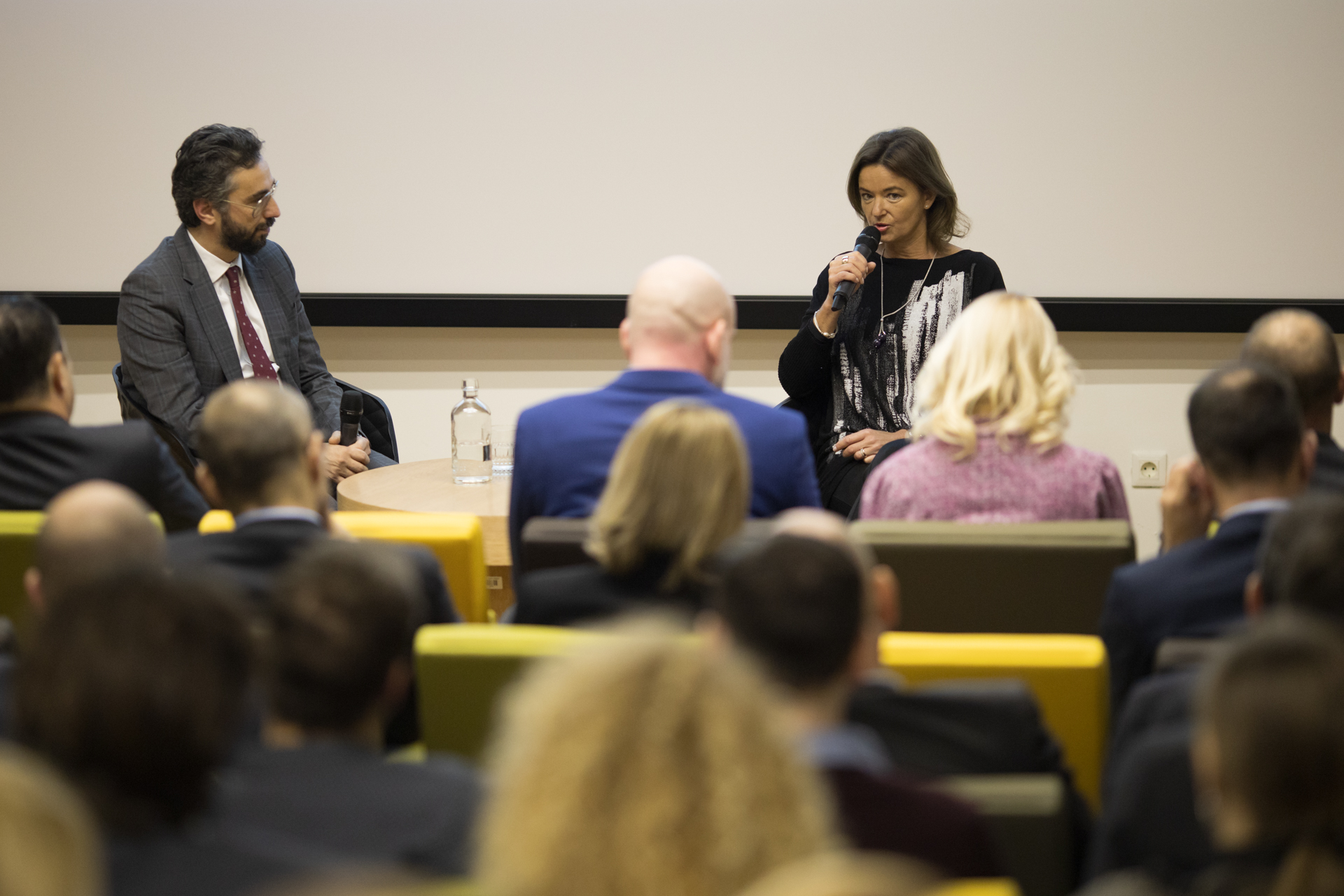
Deputy Prime Minister and Minister of Foreign and European Affairs Tanja Fajon disclosed how Slovenia intends to protect its interests in the United Nations Security Council and manage the escalating global conflicts. “The war in Ukraine and the conflict in Gaza have divided the world. This increases the role of non-permanent members like Slovenia, who can influence the formation of majorities with their votes,” she said. “Slovenia has always been recognised as an advocate and guardian of human rights. Now we must adapt to new global challenges.”
One of these challenges is climate change, and the minister pointed out that the United States, the EU, and China stand as the current biggest polluters. “These countries bear the greatest responsibility for addressing climate change.”
In a dialogue with Fajon, Kračun also highlited the polluting problems in the Western Balkan region – most countries still rely on coal, a point which the minister also agreed with. “Phasing out fossil fuels presents a serious challenge for successfully implementing the green transition in the region.”
Gradual integration
Despite 20 years of efforts to expand the EU to the Western Balkans, according to the minister, we are still far from the goal. “That’s why Slovenia has taken a proactive stance to integrate the Western Balkans into the EU by 2030«, Fajon said. »This scenario may seem illusory, but it represents a strategic necessity. This is a fact that is increasingly recognised by larger countries such as Germany and France.”
“Today, when we talk about the gradual integration of the Western Balkans into the EU, the plan is to include these countries gradually in areas where they already have aligned policies. Gradual integration is a concept agreed upon by both the EU and the Western Balkan countries, allowing these countries to join the single market,” Fajon emphasised.

Navigating business amid constant crisis
Climate change, increased uncertainties, changes in geopolitical dynamics, logistics challenges, and the question of integrating countries into the EU in the Western Balkans—all of these factors affect businesses. A roundtable discussion on how companies can adapt to new paradigms and seek new economic models was moderated by Petra Juvančič, Director of the Association Manager.
The question of how to lead state policy amid the risks of climate change and be as prepared as possible is crucial in the modern world. Dr. Jernej Štromajer, Secretary of the Strategic Council for the Economy at the Ministry of Economy, Tourism, and Sports, emphasized that we live in a period of constant crises, with climate change crisis constantly looming over us. “Climate change is a reality we must confront, and now we face the question of who will bear the financial burden of the green transition.”
The Ministry of Economy has launched the GREENovated Slovenia project, focusing on how to be innovative and efficient in allocating resources for research, development, and education. “We believe that Slovenia’s competitive advantage lies in its knowledge and technological progress, which we can offer to the world”, Štromajer said.
Maja Krumberger, Director of the Slovenian Insurance Association, pointed out that, aside from last year’s natural disasters and the fire in the Karst region the year before, we have witnessed a record number of windstorms during this period. “We must not deceive ourselves into thinking that these events are uncontrollable because they are manageable.” Andrej Lasič, a member of the Management Board of NLB, added that companies are increasingly aware of the potential consequences of climate change and are incorporating them into their business strategies, adding that “we must take care of our security and resilience with common sense.”

Striking a balance
Dr. Tomaž Vuk, President of the Management Board of Salonit Anhovo, the cement plant with the longest tradition in Slovenia, emphasised the importance of finding a balance between caring for the environment and responsibility towards employees. “We strive to find such balances that enable sustainable growth and development of society. On the other hand, not all of us can adapt to this process at the same pace. This also represents an opportunity, as those who implement this transition more effectively will also be more successful.”
He cautioned that we should not delude ourselves into thinking that we can solve everything on our own. “For example, in efforts towards a circular economy, alignment with other economic entities is essential.” He argued it is crucial for companies to recognise and understand their own capabilities and goals. “In this work, we depend on other stakeholders in society.”
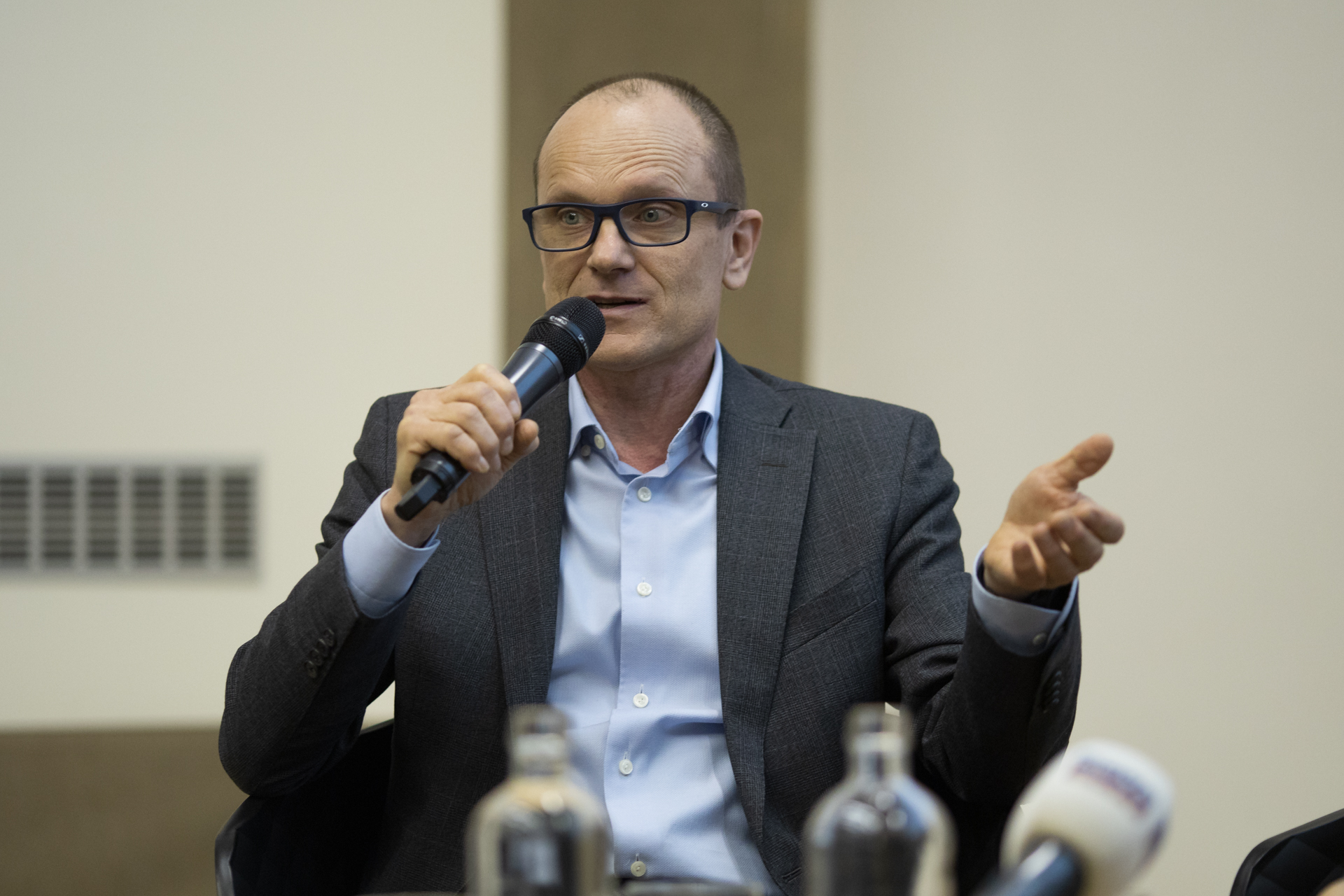
Intensifying geopolitical dynamics ahead
Ivana Vrviščar, a member of the management board of Pošta Slovenije, pointed out that most companies are already intensely engaged in the green transition. Still, at the same time, we are also facing growing geopolitical challenges, she added, pointing to the current situation in the Red Sea, through which 18% of global trade passes.
“Pošta Slovenije, as a logistics company, is well aware of these challenges.” Although the green transition is at the forefront of many companies’ interests, there is a high probability that geopolitical dynamics will become even more pressing in 2024, she noted, adding that “every crisis brings certain opportunities.”
In conclusion, Dr. Tomaž Vuk highlighted the importance of such discussions for the success of the Slovenian economy. “I wish for more discussions like these that provide a clear view without ‘blinders,'” he said.
The sobering discussion was built on during the networking event that followed. To those of you that attended, we hope you enjoyed the event as much as we loved hosting it! And to those of you who missed out, you can get your copy of The Adriatic: Strategic Foresight 2024 by contacting us at info@isr.si
We’d like to thank our partners, SPIRIT Slovenija; our general partner and sponsor, NLB d.d., and our sponsors Zavarovalnica Triglav, d.d., INTEREUROPA, Global Logistics Service, Salonit Anhovo, Roche Slovenija and Petrol Group.
Fine Wine from the Balkans
Living
editor

Špela Bizjak
JOURNALIST AT THE ADRIATIC
Nestled in the heart of southeast Europe, the Balkan region has long been a treasure trove of history, culture, and natural beauty. But the Balkans are also home to some of the world's most captivating and underrated wine-producing regions. We embark on a journey through the diverse and rich vinyards, where traditions meet innovation, and where a sip of wine reveals stories of resilience, passion, and a deep connection to the land.
Montenegro - Plantaže
Thirty kilometers from the Adriatic Sea, next to lake Skadar, are infinite rows of grapevines from one of the largest vineyards in Europe – Ćemovsko polje. It covers 2.300 hectars with around 11.5 million grapevines. Even though it may seem impossible, 95% grapes from Ćemovsko polje are picked manually. More than 2,000 people participate during the harvest that lasts from August to the end of September.
Today Plantaže is a modern enterprise known for its authentic varieties of Vranac and Krstač wines which have garnered awards and gained recognition for their distinct geographical origins. They are meticulously crafted and stored in the impressive Šipčanik wine cellar, where more than two million litres of wine mature to perfection. Plantaže are also a huge contributor to the national economy and the country’s biggest exporter to over 44 countries worldwide across nearly every continent.
North Macedonia - Tikveš /Tikveš Winery
Tikveš is the most well-known wine region in Macedonia. It is in the very heart of the country and stretches along similar latitudes as the Bordeaux region in France, Tuscany region in Italy and the Napa Valley region in California. The wine district is situated on around 2,000 sqm of fertile land, surrounded by mountains on three sides.
T’ga za Jug wine was created at the beginning of the seventies of the last century, where the name comes from the title of a poem by Konstantin Miladinov, a famous poet from Struga who lived in the middle of the 19th century. He spent some time living in Russia where he wrote an elegy in which he yearns for his homeland. T’ga has become a symbol of North Macedonian wine, reflecting the distinctive essence of the southern regions.
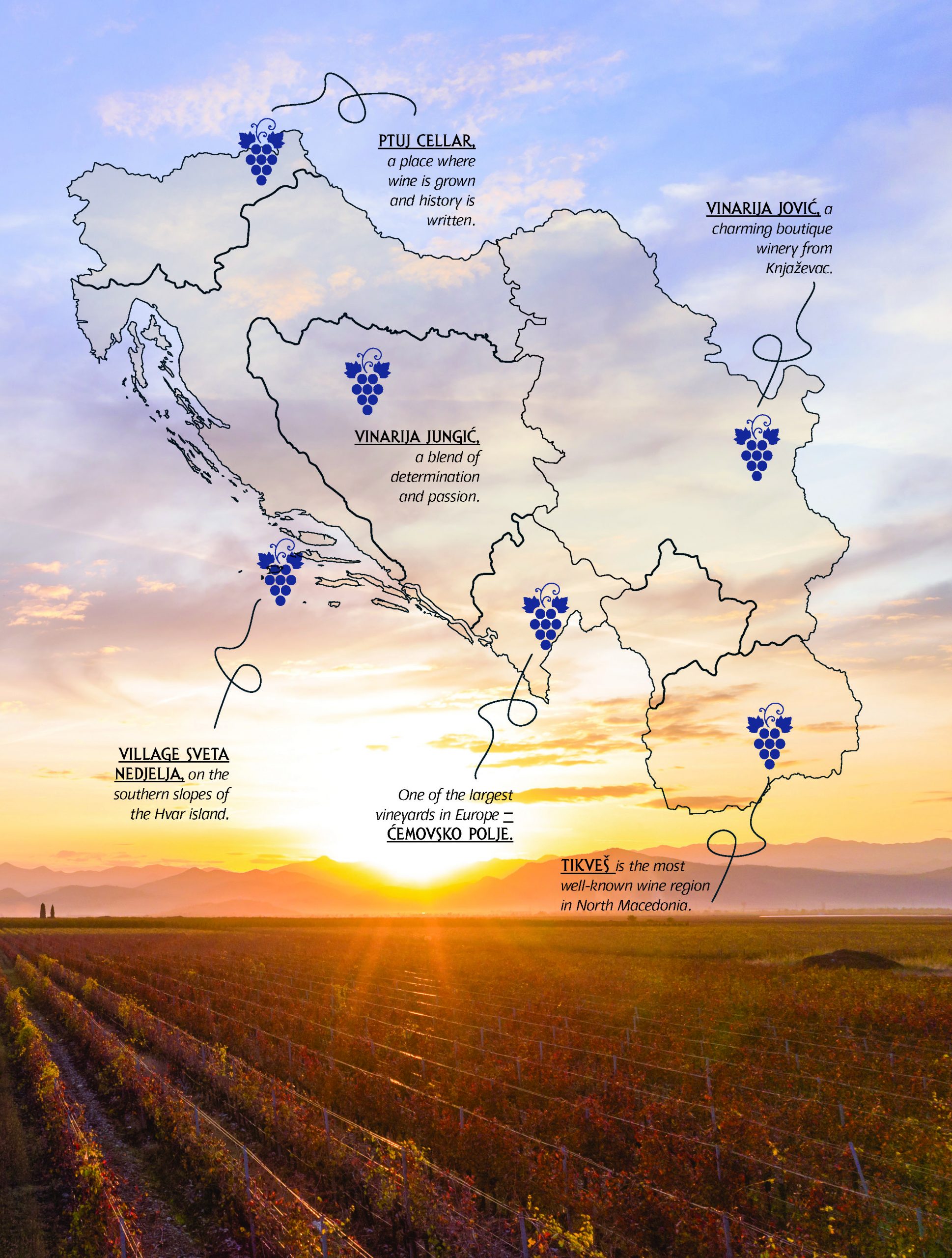
Serbia
Vinarija Jović, a charming boutique winery from Knjaževac, is one of the few in Serbia’s treasure trove of hidden gems, perhaps best known for its popular Vranac wines. The winery’s brand is also the famous Potrkanj Vranac and Višnjica, an internationally recognised wine made from an autochthonous cherry variety.
Bosna & Herzegovina - Vinarija Jungić
Owner Željko Jungić shares that his motivation for starting the winery comes from a blend of determination and passion, driven by the curiosity of seeing Slovenians, Austrians, Swiss, English, Swedes, and Canadians successfully producing wine, while Bosnia and Herzegovina had no local grape cultivation and winemaking. In pursuit of his ambition, over 18,000 vines of high-quality wine varieties now thrive on approximately 6 hectares of Markovac village’s picturesque slopes.
In addition to the vineyard, a fully equipped winery winery and a welcoming tavern have been constructed to cater for tourists. Jungić’s best known wine is the red Šikar. The winery puts a special focus on cabernet sauvignon, merlot, and white chardonnay, pinot blanc and rhine riesling varieties.
Croatia - Zlatan otok, Hvar
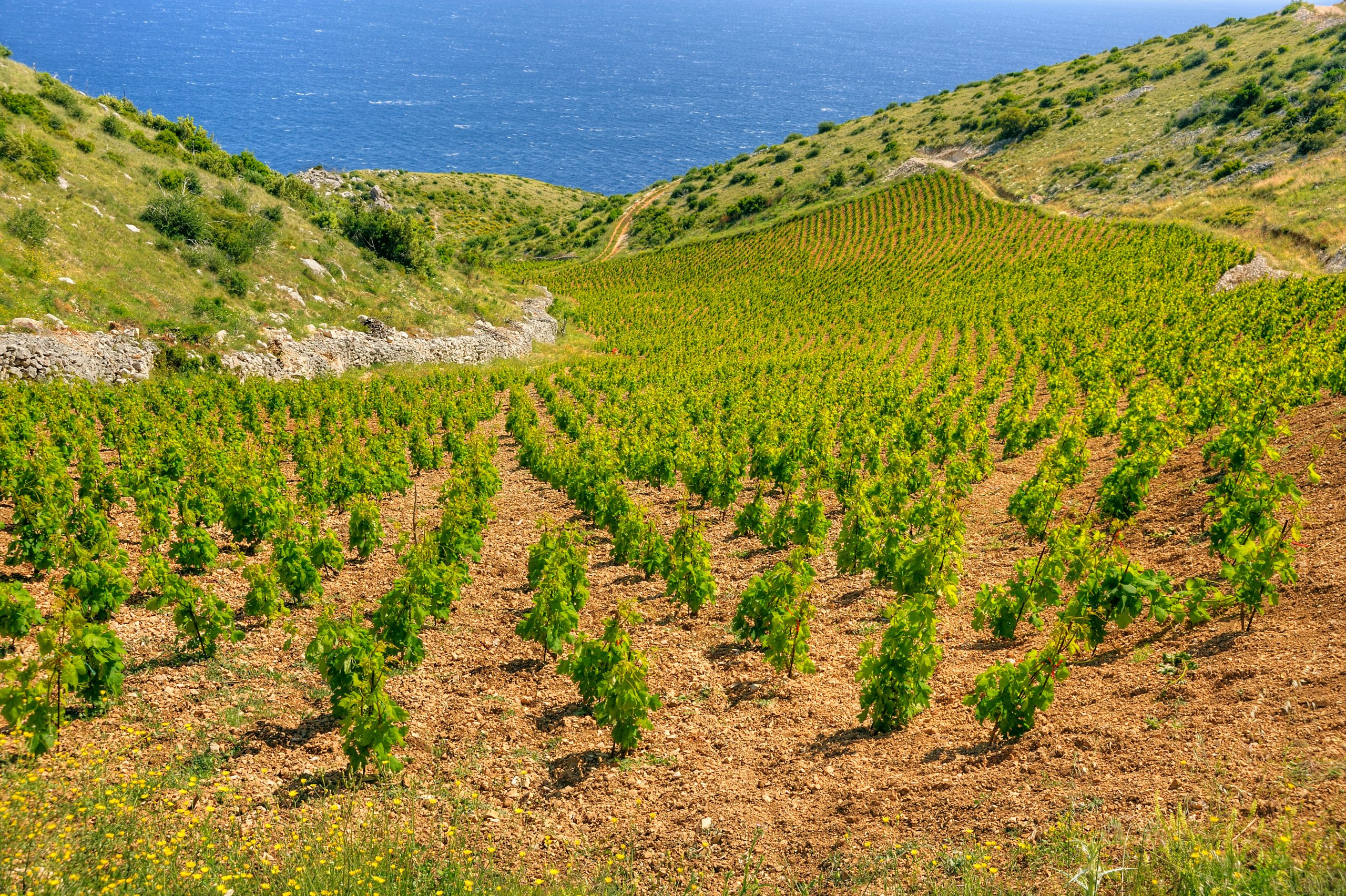
One of the most awarded wineries with a long tradition of producing top quality wines from native Croatian varieties. Located in the village Sveta Nedjelja, it is surrounded by stunning and distinctive vineyards on the steep southern slopes of the Hval island. The vineyards are special because they grow on slopes with inclines of up to 40%, where they have great sun exposure while benefitting from the stabilising influence of the nerby sea which prevents excessive temperature fluctuations. The pinnacle of their wine production is the world-renowned and extensively awarded Zlatan Plavac Grand Select, originating from these exceptional vineyards.
THE ADRIATIC
This article was originally published in The Adriatic Journal: Strategic Foresight 2024
If you want a copy, please contact us at info@isr.si.
"Our region needs to look for connecting points, as its economies are highly complementary."
Finance and business
editor
By Jan Tomše
It is the responsibility of European and regional leaders to ensure stability and the fastest possible integration of the entire Adriatic region into the European Union, says Andrej Lasič, member of the management board of NLB, who is responsible for corporate and investment banking. We caught up with him to discuss the latest economic developments in the region, the opportunities and challenges facing the countries. Sharing valuable insights from the perspective of a corporate banker in the region’s largest financial institution, he shed some light on what 2024 may have in store for the region’s economy and people.
As a corporate banker, how would you assess year 2023 in the Adriatic region in terms of economic and business developments?
Looking back at the end of 2022, when there was still a lot of pessimism, I think that in economic terms, despite all the challenges and turbulence, we can be satisfied. The current forecasts for economic growth in our region are much higher than, for example, the euro area average. While the average real GDP growth in the euro area in 2023 will be, according to some estimates, only 0.4%, the region will grow much faster, with Slovenia at 1.3%, North Macedonia at 2% and Montenegro at 4%, for example. We can see the gap with the most developed countries is narrowing, but sustaining this trajectory hinges on political stability.
Decision-makers should strive to unite on the most important issues. I am an optimist and believe that this is possible, even when agreements in the region may seem hard to reach. There is no alternative to dialogue, to finding solutions together and to working together.
I see key risk for the region arising from extremely unfavourable demographic trends, primarily due to emimakers to move towards the European Union as quickly as possible. If the Adriatic region manages to maintain a constant course of development, it can emerge as a relative winner amid this challenging period.
What are the main challenges facing the region at the moment and is there room for optimism?
The region as a whole needs to maintain political stability, and there must be an agreement among the decision-makers to move towards the European Union as quickly as possible. If the Adriatic region manages to maintain a constant course of development, it can emerge as a relative winner amid this challenging period.
Despite the challenges, I am optimistic for several reasons. The countries in the region have relatively low debt compared to the euro area. With the exception of Slovenia and Montenegro, their public debt is around 50% of GDP, and it is even lower in Kosovo and Bosnia and Herzegovina, while the euro area’s average public debt exceeds 90% of GDP. Moreover, the Adriatic region is extremely resilient and accustomed to living with inflation.
The third and crucial reason is the nearshoring trend in the German-Italian-Swiss economic basin. Amid a number of geopolitical uncertainties and logistical challenges stemming from the war in Ukraine, conflict in the Middle East, and the disruption caused by the coronavirus pandemic, the European economies are adjusting their supply chains. This is a tremendous opportunity for the whole Adriatic region, and especially for Slovenia, which is a key economic partner of the Central European economy and can play an important role as a link to the markets in our region.
So where should Slovenia as a country and Slovenian companies look for opportunities in the region?
I think there is still a lot of untapped potential in the region. We know well both the region and the West, so Slovenia could be a hub and a bridgehead connecting the region with Central and Western Europe.
Unfortunately, at the moment, the Adriatic region seems to have slipped from the West’s spotlight. This is partly because it is fragmented and does not have a unified and common voice in dealings with Brussels, and partly because new crises are constantly emerging in the EU’ neighbourhood. If the region was better integrated and spoke with a unified voice in its interactions with the EU, I am convinced it would have greater negotiating power. In such a case, Europe would recognise it as an integrated economic area that together represents a market of 20 million people and, at the same time, a significant productive power. Better cooperation is in the interest of both the the EU and the Adriatic region.
The Nutcracker, A Christmas Carol
Culture
editor
By Alenka Žvikart
The spirit of the holidays can feel like magic to some and to others more like a deadline, looming on the horizon. Whether you fall under the first or the second category, this festive story will bring you some cheer. Nutcracker - A Christmas Carol is an evergreen sensation which can lighten up even the Scroogiest of Scrooges among us. Since its premiere season in 2002/2003, the show has experienced more than 180 repetitions on the SNG Opera and Ballet Ljubljana stage.
Judging by this year’s sold-out performances of this iconic ballet, Ljubljana was in dire need of magic this year. For those who missed out on tickets to this year’s show, we have decided to bring a touch of Nutcracker magic this morning to your home. Take a journey into the land of sugar, snow, and fantasy by immersing yourself into one of the literary inspirations behind the ballet: A Christmas Carol, penned by the illustrious English novelist and social critic of the Victorian era, Charles Dickens. A Christmas Carol is a novella that has become a timeless classic. It tells the story of Ebenezer Scrooge, a miserly old man who undergoes a transformation after being visited by the ghosts of Christmas Past, Present, and Yet to Come. The tale beautifully highlights themes of redemption, compassion, and the true spirit of Christmas.
Another Christmas classic from which the libretto is adapted, is E.T.A. Hoffman’s story The Nutcracker and the Mouse King. In the story, the Nutcracker is a Christmas toy that comes to life and defeats the evil Mouse King. The ballet is a combination of the two classic literature pieces. It tells the story of a young girl Marie Stahlbaum who receives a nutcracker toy as a Christmas gift from her godfather, Drosselmeyer. On Christmas Eve, the magical toy comes to life, and Marie finds herself in a fantastical world of princes, sweets, and fairies.
Nutcracker’s storyline is indeed whimsical and fun, however, when it comes to magic, the music takes the cake. The performance’s most famous piece of musical writing is the Dance of the Sugar Plum Fairy, written by Pyotr Ilyich Tchaikovsky and originally choreographed by Lev Ivanov. The Sugar Plum Fairy is the ballet’s leading role and one of the most challenging performances. This captivating character was initially brought to life by an Italian prima donna and a ballet dancer, Antonietta Dell’Eraa. The original play from 1982 was already revolutionary as it included a lot of child ballet dancers, who brought a unique magical energy to the performance. In Ljubljana, the ballet still follows this tradition. In the show, ballet soloists and the ballet choir of the SNG Opera and Ballet Ljubljana perform along with students from the Conservatory of Music and Ballet in Ljubljana.
SMEs' Climate Readiness and Sustainability Commitment in Spotlight
Climate change
editor
By Maja Dragovic
As COP28 unfolds in Dubai, echoing three decades since the Rio Summit gave birth to the United Nation Framework Convention on Climate Change, the imperative for governments and businesses to join forces against climate change is becoming more prominent. Governments worldwide are increasing pressure on businesses to strenghten their green policies.
Part of this pressure push is Corporate Sustainability Reporting. The reporting practice is integral to the European Sustainability Reporting Standards (ESRS) which is a key component of the EU’s sustainability agenda aimed at boosting transparency and comparability in corporate sustainability reporting.
The upcoming event in Ljubljana, hosted by the Slovenian British Chamber of Commerce and the Institue for Strategic Solutions (ISR), will shed some light on this issue. In particular, the readiness os SMEs in climate reporting. Jure Stojan from ISR is one the keyone speakers who will share his insights on comparative analysis of SMEs’ carbon intensity vis-a-vis larger corporations, utilizing data gleaned from the Spanish Carbon Footprint Register.
A significant focal point of the event will also be looking at the commitment of leading SMEs in reducing their carbon footprints. Initiatives such as the SME Climate Hub and the Science Based Targets, where UK NGOs play pivotal roles, exemplify the potential for SMEs to contribute substantially to climate action. Business leaders will share their experiences in sustainability reporting, providing valuable perspectives, shedding light on the practicalities and challenges faced in aligning with global sustainability standards.
»Climate change and natural disasters spare no one, including SMEs, as evidenced by the August floods in Slovenia,« Stojan notes. »SMEs comprised a significant portion of the beneficiaries of the first issuance of state aid for rebuilding, with 87% of them receiving 52% of the funds.«
Resilience in the face of natural disasters
The impact of natural disasters is set to hasten the adoption of sustainability measures amongst SMEs.
»Small and medium-sized enterprises (SMEs) are poised to increasingly embrace sustainability practices,« Stojan says. »This shift will largely be driven by mandates from their financiers and major business partners, who are already operating under stricter environmental disclosure regulations. Additionally, public tenders may soon require adherence to sustainability standards. In this transformative era, SMEs that adapt early will gain a significant competitive edge«.
The event will take place on 13 December 2023 at the Intercontinental Hotel from 9am – 11am The full programme can be accessed here
The Ghost of Ljubljana's Past, Present and Future
editor
By Alenka Žvikart
Cosy cafes, antique shops, the smell of fresh paint and historical boutiques. Where nostalgia meets the future, and diversity thrives. As Ljubljana dons the Christmas decor, Trubarjeva Street remains hidden from the holiday crowds. Yet, it radiates with authentic festive glee. Nestled in the very heart of the capital, this multicultural yet quaint street is a haven for artists, chefs, diverse cultures, students, and bohemians.
One of Ljubljana’s oldest streets, first mentioned in 1802, Trubarjeva has changed names a few times. Initially named as Nikolausgasse, it became known as Proštijska Street in 1892. Then, in 1955, it assumed its present-day name, honouring the name of the founder of Slovenian literature and the author of the first Slovenian book, Primož Trubar.
Trubarjeva is dotted with a variety of quirky shops. Slovenia’s oldest umbrella repair shop, still thriving at Trubarjeva 18. Marija Lah, the shop’s owner, is the last umbrella vendor in Ljubljana, overseeing the business for the past 30 years. Originally opened by her father in 1966, Marija took charge of Dežnik after he fell ill. Impressively, Lah manages to repair 98% of the umbrella, while the remaining 2% are converted into sustainable and adorable shopping bags. “In each umbrella, I see the materials and human craftwork, energy and work that has been put into the making-of process,” says Lah.
A Whirlwind of Cultures
Strolling down Trubarjeva, blindfolded, might whisk you away to far-flung corners of the globe, as the tantalizing aromas from nearby restaurants envelop your senses – just watch out for the historic cobblestone beneath your feet! An international culinary tapestry unfolds on the street, featuring diverse kitchens such as Lebanese, Thai, Greek, and more. Among the gems is Abi Falafel, an eye-catching eatery that has graced the street for a decade. Founded by a dynamic father-daughter duo, Hana Shaar, the daughter, hails from a unique blend of Palestinian and Slovenian heritage, a union rooted in her parent’s student days in the former Yugoslavia. Abi Falafel prides itself on using locally sourced ingredients and importing spices, resulting in a vibrant menu encompassing everything from shish kebabs to an array of enticing vegetarian dishes.
Culinary experiences aside, Trubarjeva is also home to important cultural, activist, artistic and educational institutions: the environmental center Focus, autonomous factory Rog, one of the most famous antique shops in Ljubljana – Carniola Antiqua, Slovenian-Serbian Club – Bookstore, Reading Room, Gallery and Antique Shop, House of Experiments and many more. In short – Trubarjeva is a dashing place, appropriate for all occasions, from holiday shopping and fine dining to indulging your mind and soul in more or less alternative cultural events.
Beyond its culinary delights, Trubarjeva encapsulates a vibrant tapestry of cultural, activist, artistic, and educational institutions. Here, you’ll find the environmental hub Focus, the autonomous factory Rog, the renowned antique emporium Carniola Antiqua, and the multifaceted Slovenian-Serbian Club featuring a bookstore, reading room, gallery, and antique shop. Add to this the intriguing science hub House of Experiments and many other establishments, and you have a thorough immersion into the varied cultural landscape. In essence, Trubarjeva is a dynamic locale, suited for every occasion – whether it’s holiday shopping, exquisite dining, or immersing your mind and soul in a spectrum of alternative cultural events.

